BUSHFIRES
An estimated 3 billion animals died in the cataclysmic Australian fires in 2020. I flew to Australia on assignment with We Animals and Animals Australia, and spent a few weeks driving thousands of kilometers to gain rare access to fire-damages sites where surviving animals were being searched for and rescued.
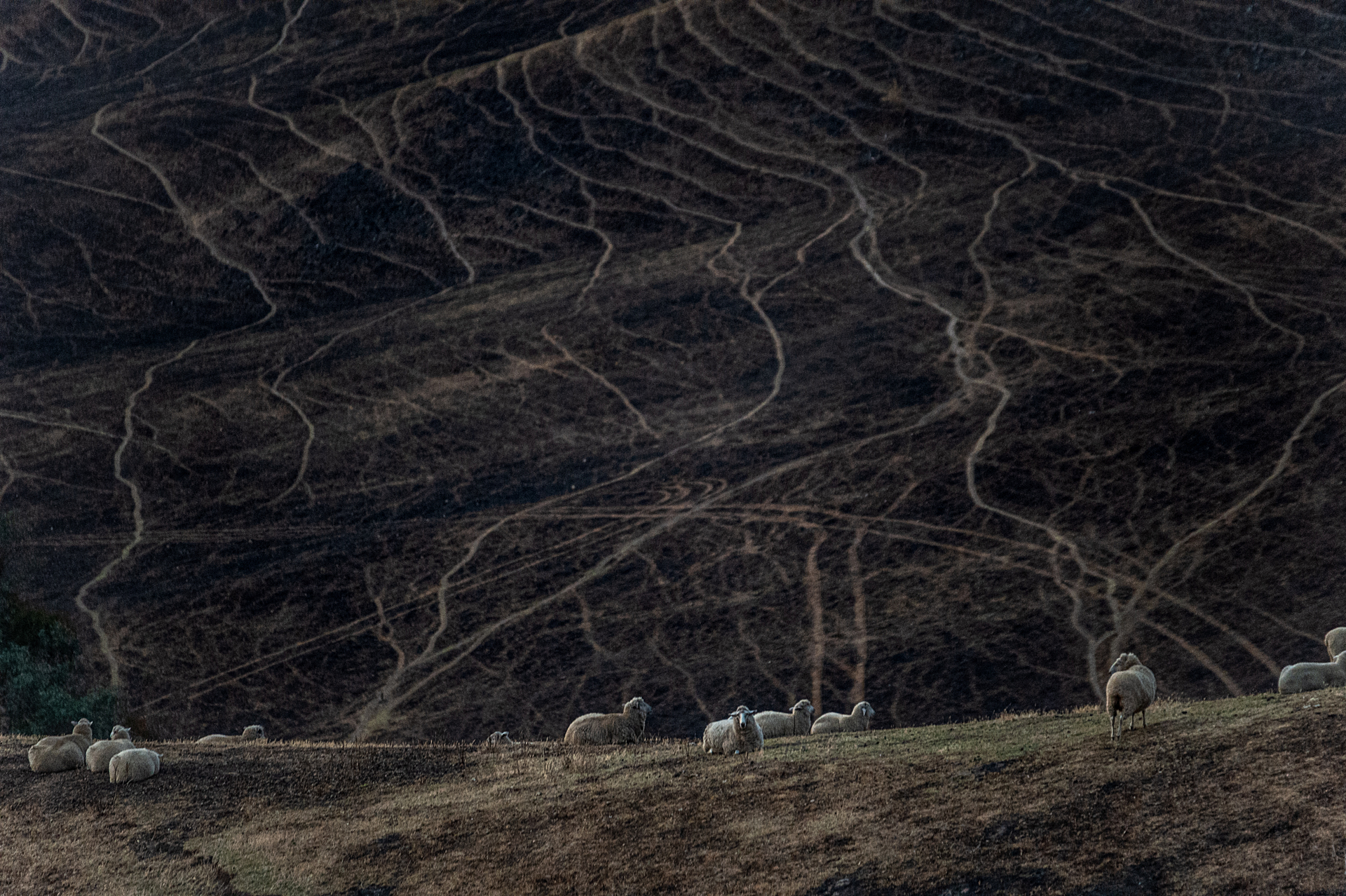
Sheep graze on scorched land in the Buchan area.
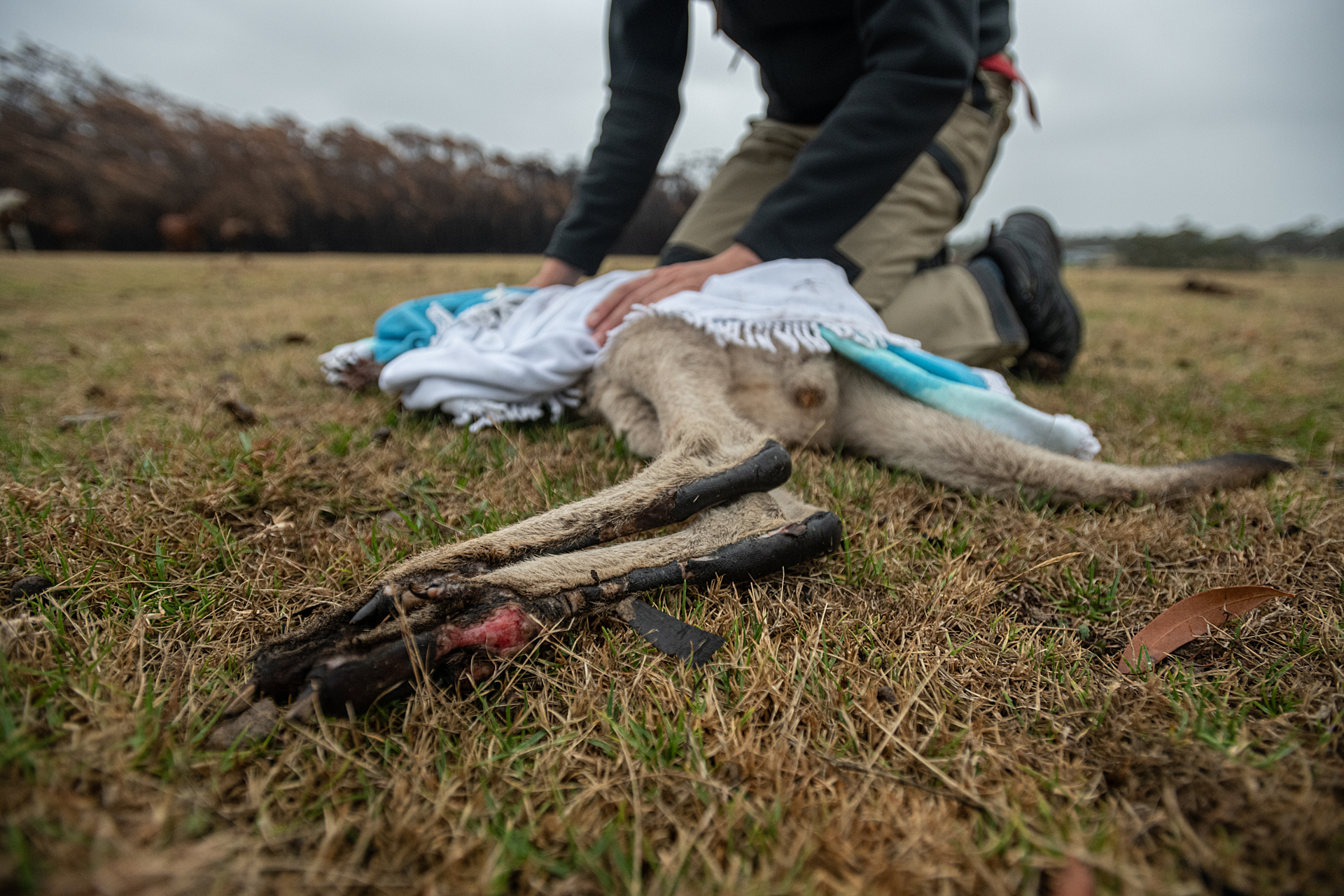
Louise Bonomi with a sedated joey who was injured by the bushfires.
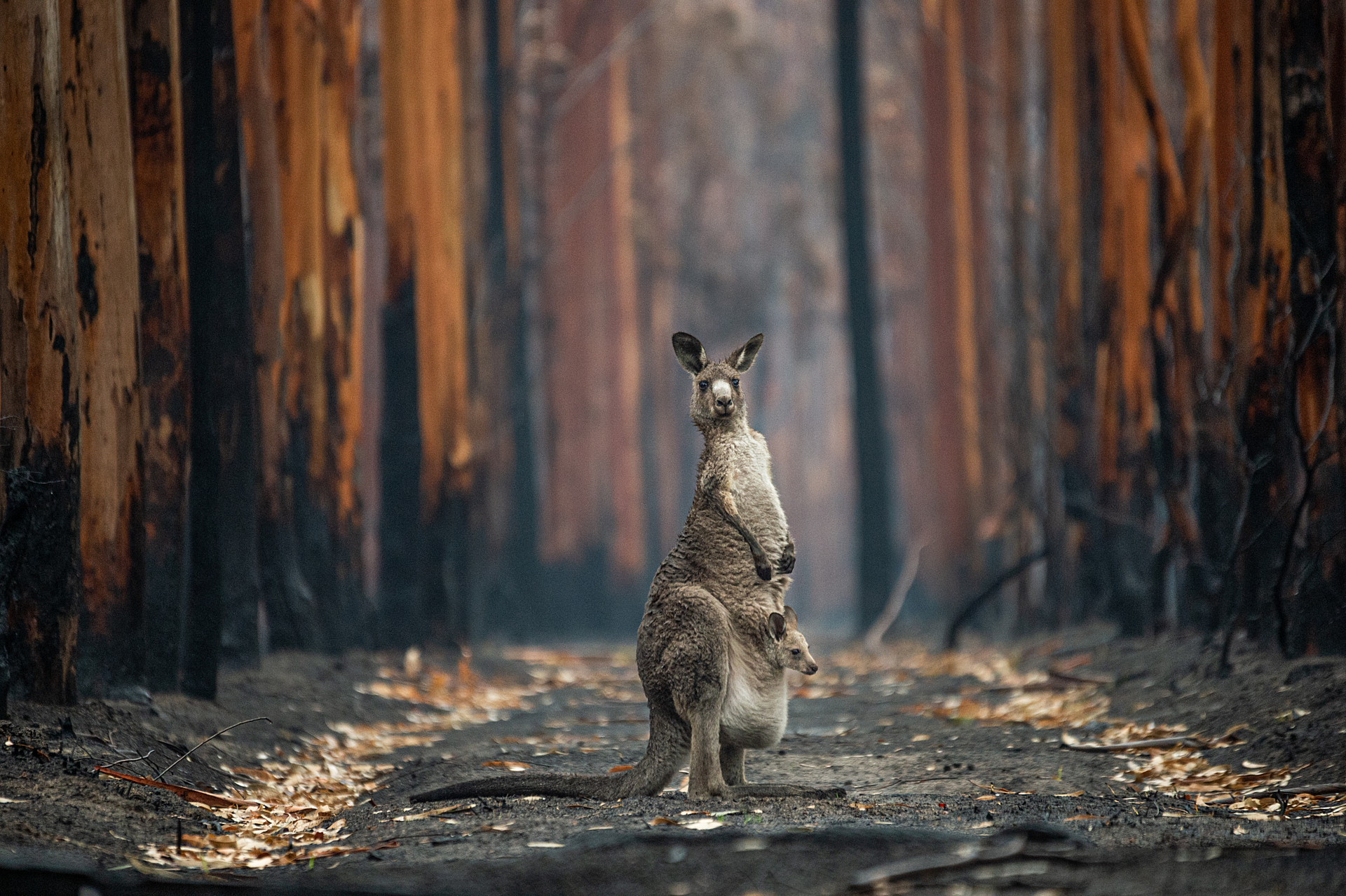
An Eastern grey kangaroo and her joey who survived the forest fires in Mallacoota, stand in a burned eucalyptus plantation.
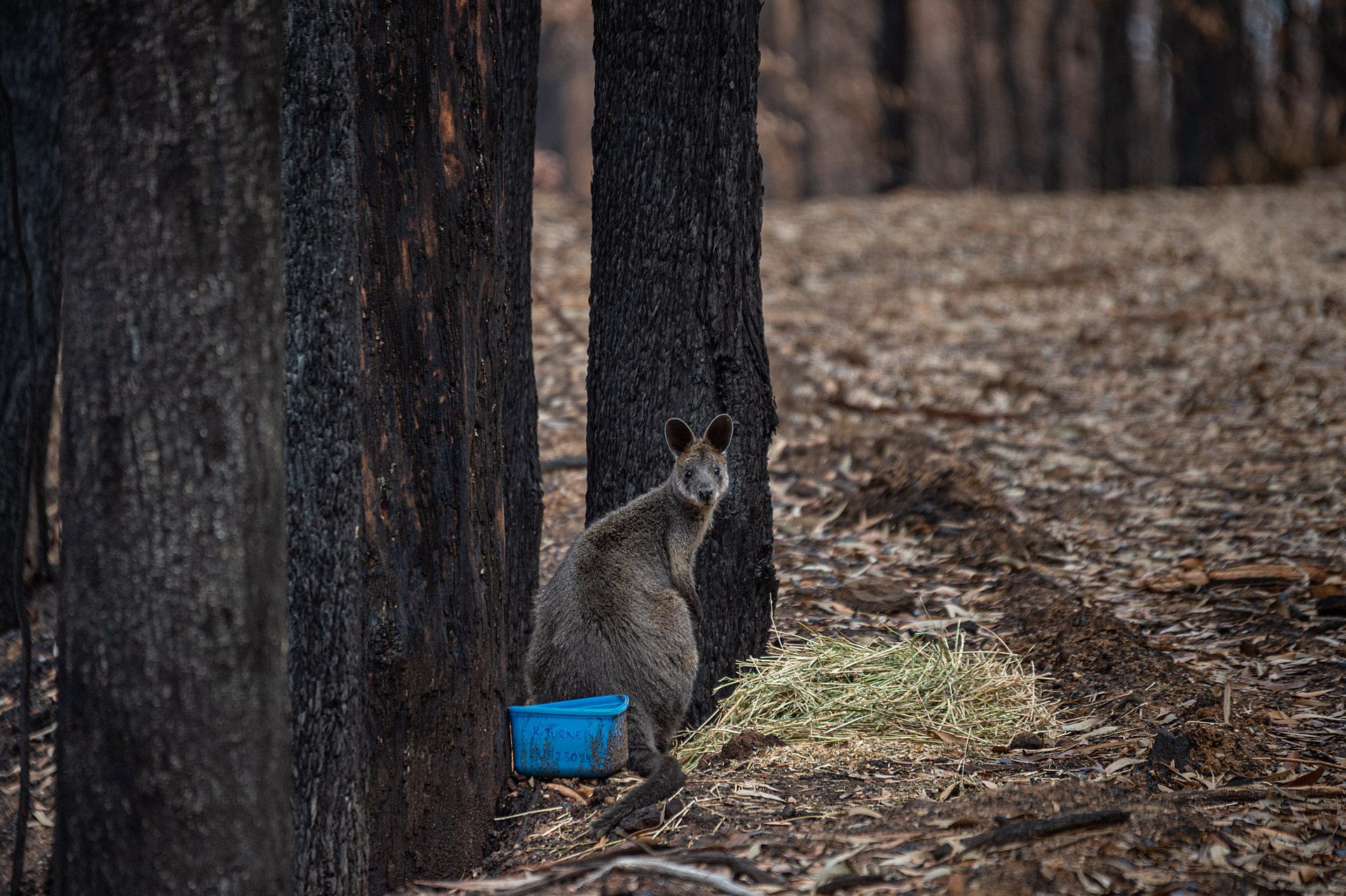
A lone wallaby goes to drink from a blue water bowl that was put out for wildlife outside a farm in the Buchan area. People are leaving these bowls out for animals in all parts of the country.
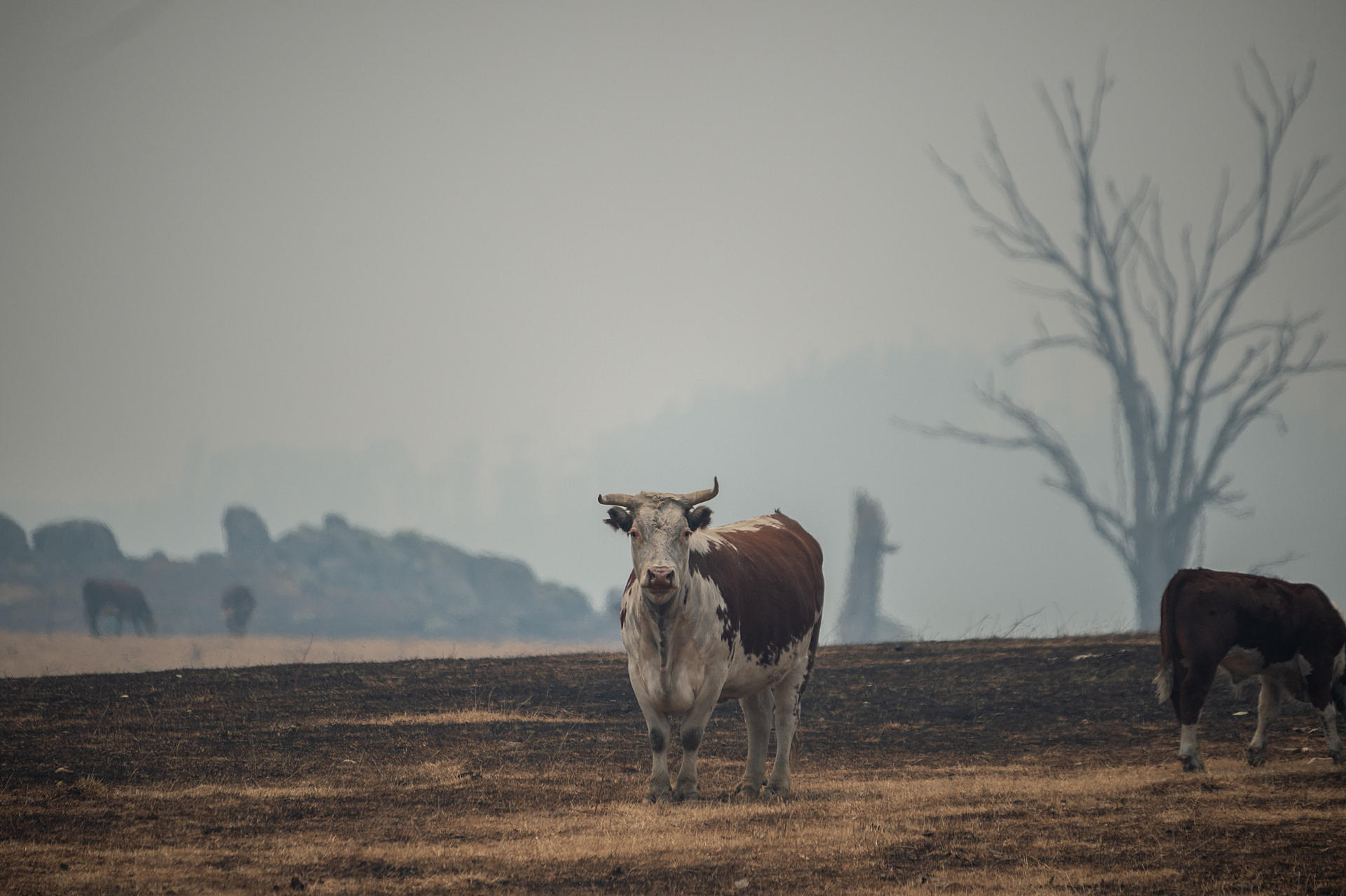
Cattle on dry, smoky landscapes in the Corryong area.
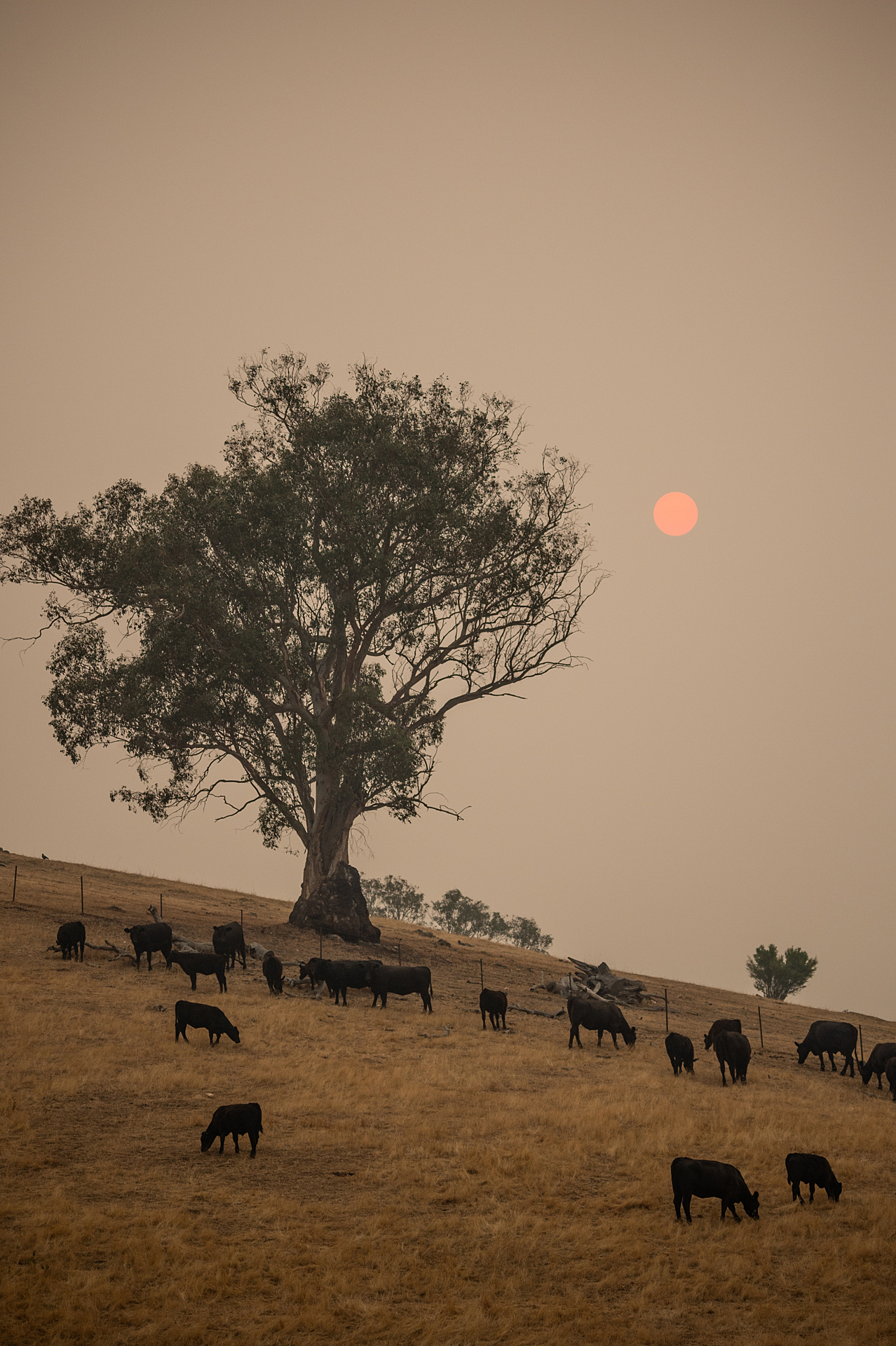
Cows grazing in the smoky landscape in the Corryong area.
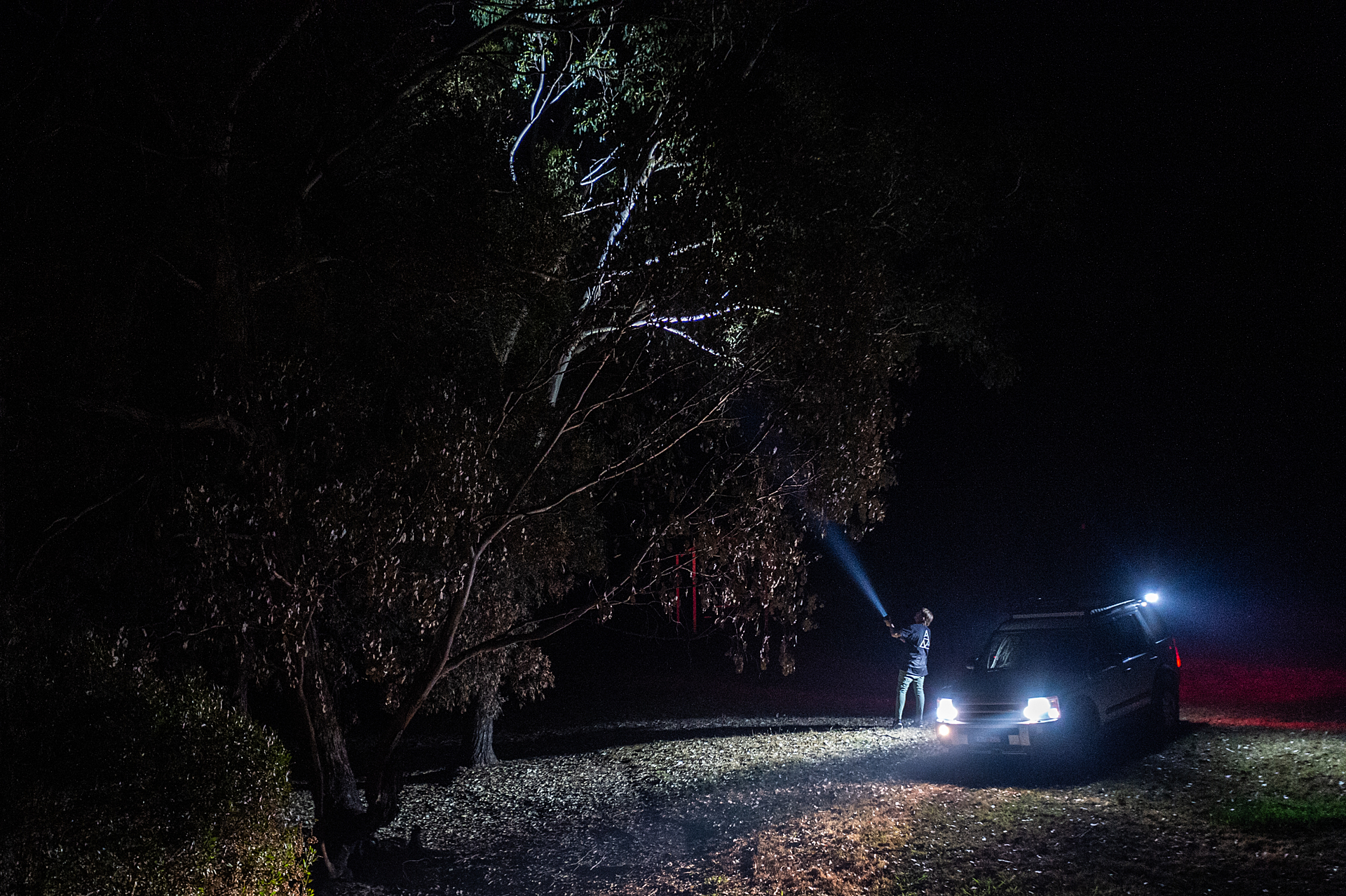
Driving through the forests north of Corryong, Victoria, the Animals Australia team stopped to look for dehydrated, hungry, or injured koalas in the charred landscape. Starving koalas could sometimes be seen clinging to burned eucalyptus trees.
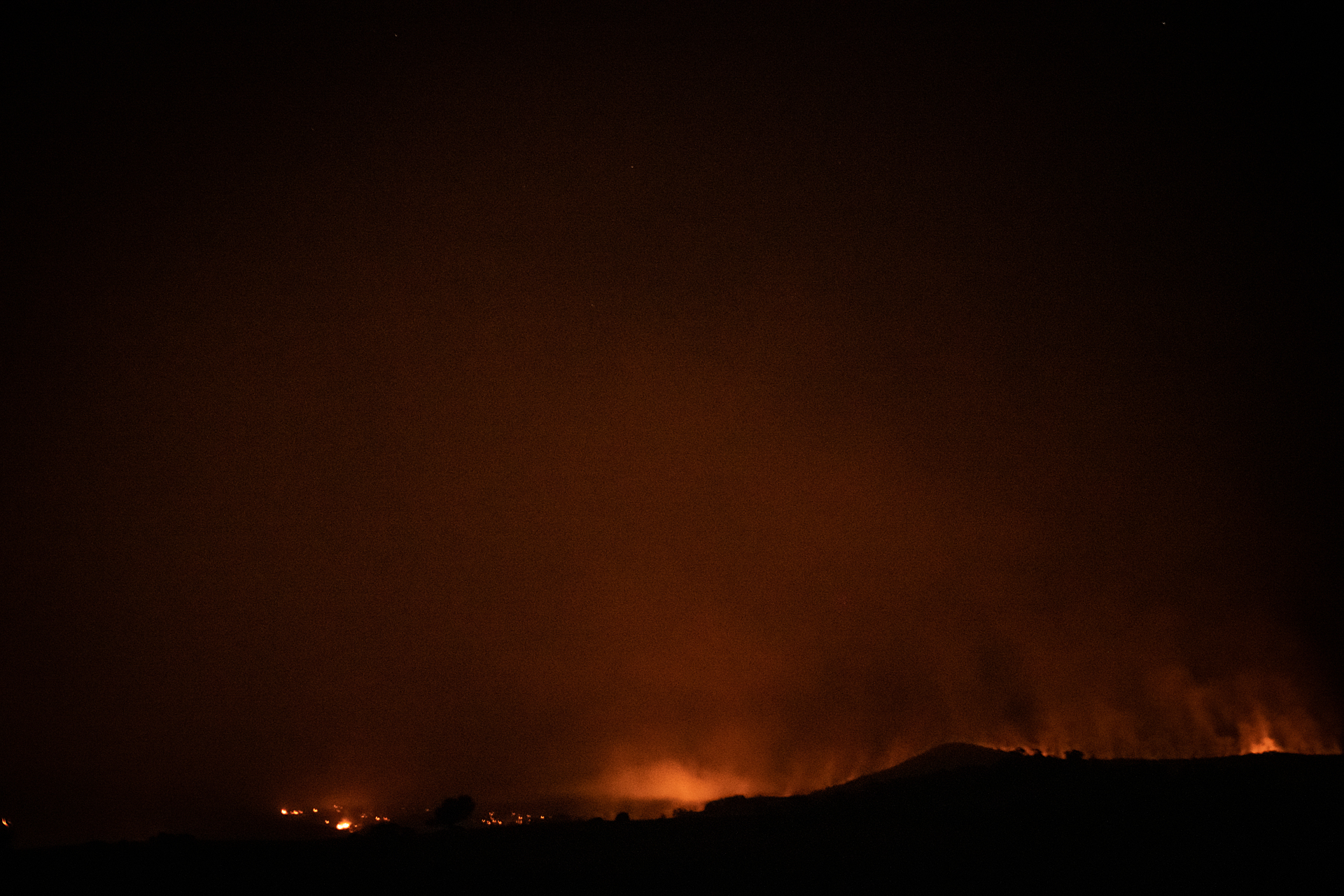
Bushfires in the distance near Tumbarumba.
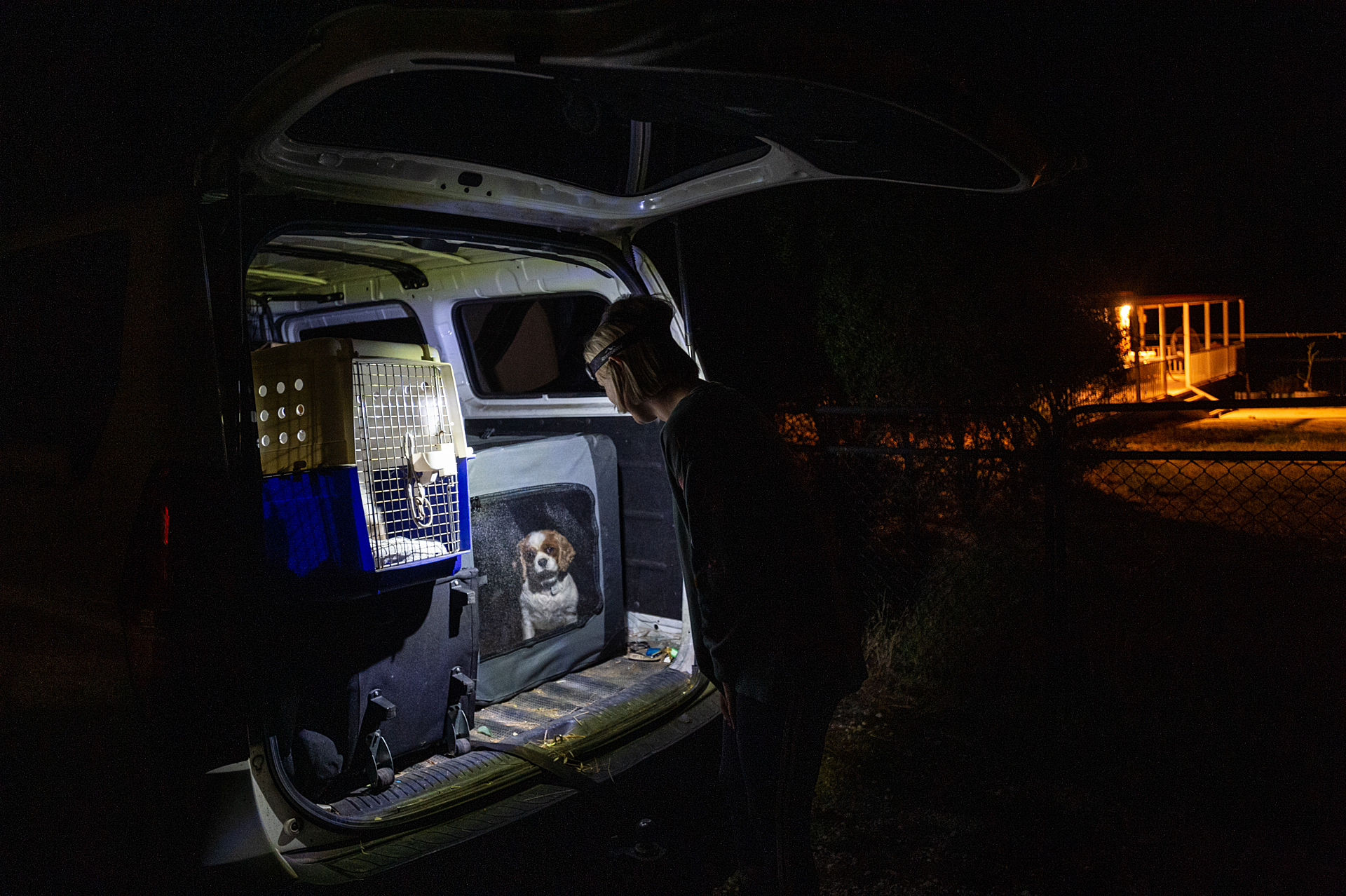
A family and their rescued animals during a late night evacuation away from the bushfires near Lancefield. As fires continued to move through the state of central Victoria, thousands of people waited on alert to mobilize and leave their homes with their families, animals, and possessions at a moment's notice. Georgie Katherine and Ward Young, who own a property that houses many of their rescued animals, were alerted to leave, and spent several hours relocating horses, cats, and other animals to a safer property nearby.
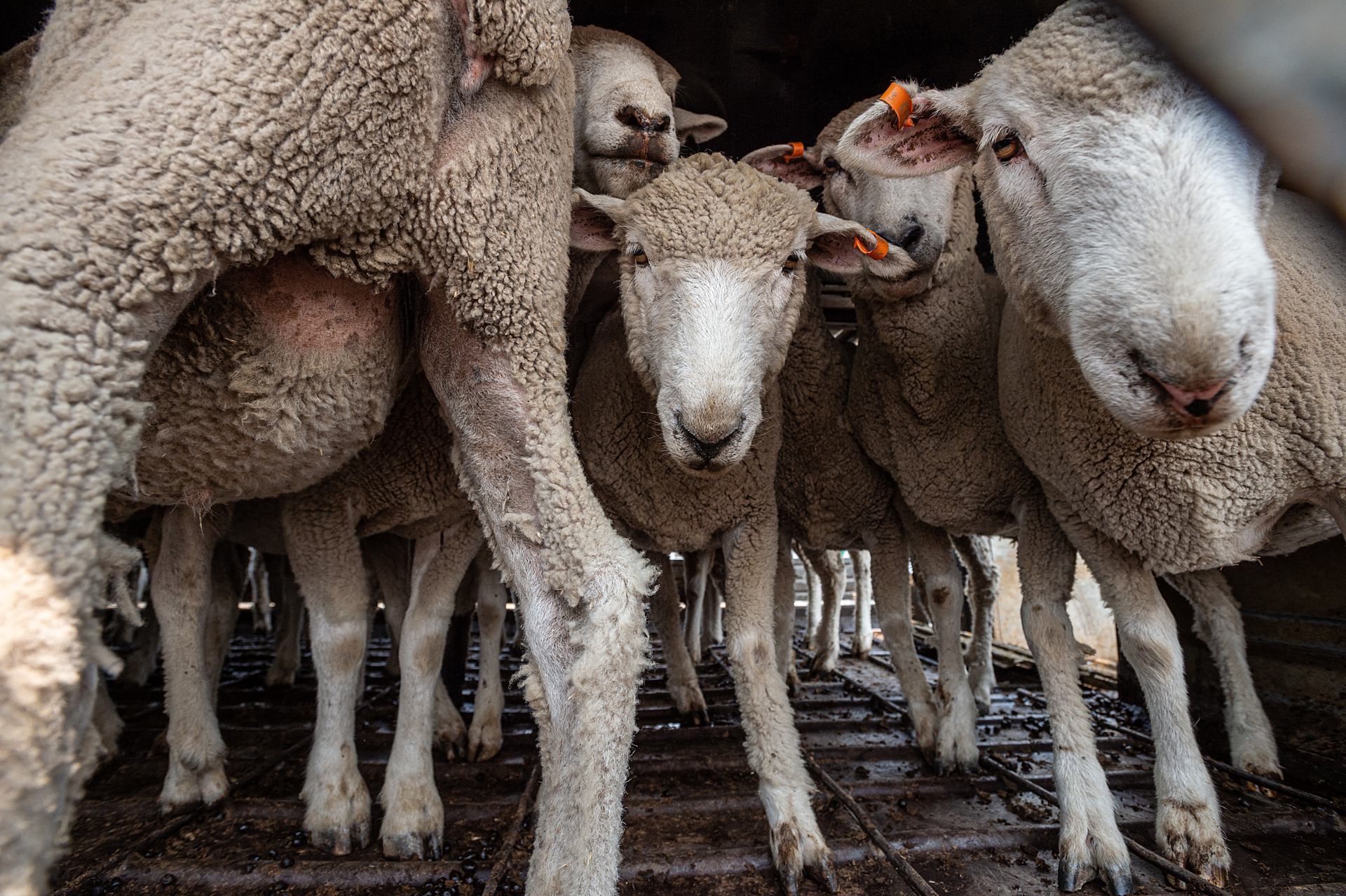
Saleyards in New South Wales saw an influx in animals being sent to slaughter prematurely in the aftermath of the bushfires. The exceptionally dry season had not yielded enough food and grazing land to feed the animals, and some farms lost the entirety of their animal food stores. Without the ability to feed the animals, farmers felt they had no choice but to send them to slaughter. Many animals were also burned by the fires that swept quickly through grassy pastures, irreparably injuring hooves and sealing shut udders and penises. These animals were sent to slaughter rather than given expensive long-term veterinary treatment.
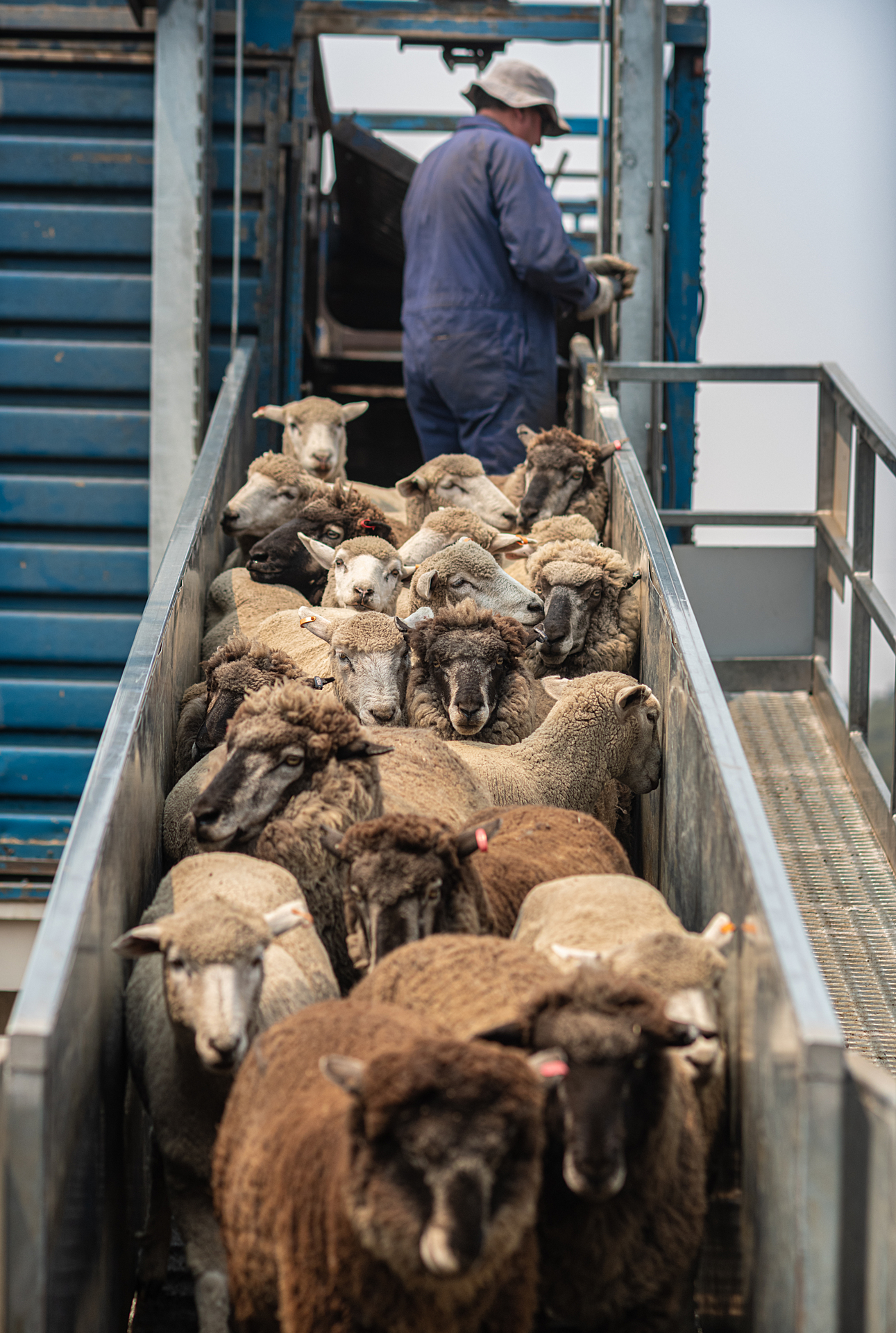
Saleyards in New South Wales saw an influx in animals being sent to slaughter prematurely in the aftermath of the bushfires. The exceptionally dry season had not yielded enough food and grazing land to feed the animals, and some farms lost the entirety of their animal food stores. Without the ability to feed the animals, farmers felt they had no choice but to send them to slaughter. Many animals were also burned by the fires that swept quickly through grassy pastures, irreparably injuring hooves and sealing shut udders and penises. These animals were sent to slaughter rather than given expensive long-term veterinary treatment.
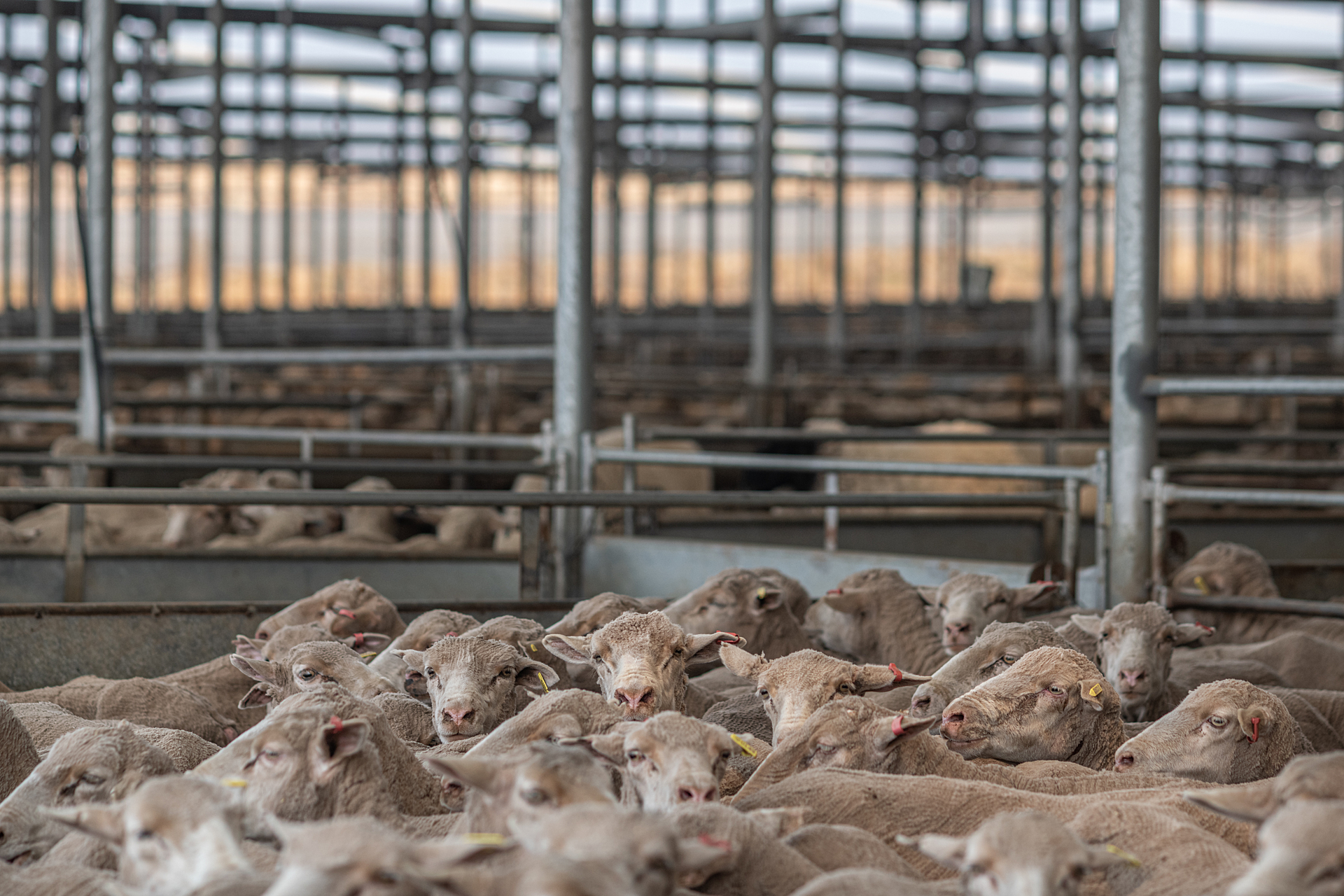
Saleyards in New South Wales saw an influx in animals being sent to slaughter prematurely in the aftermath of the bushfires. The exceptionally dry season had not yielded enough food and grazing land to feed the animals, and some farms lost the entirety of their animal food stores. Without the ability to feed the animals, farmers felt they had no choice but to send them to slaughter. Many animals were also burned by the fires that swept quickly through grassy pastures, irreparably injuring hooves and sealing shut udders and penises. These animals were sent to slaughter rather than given expensive long-term veterinary treatment.
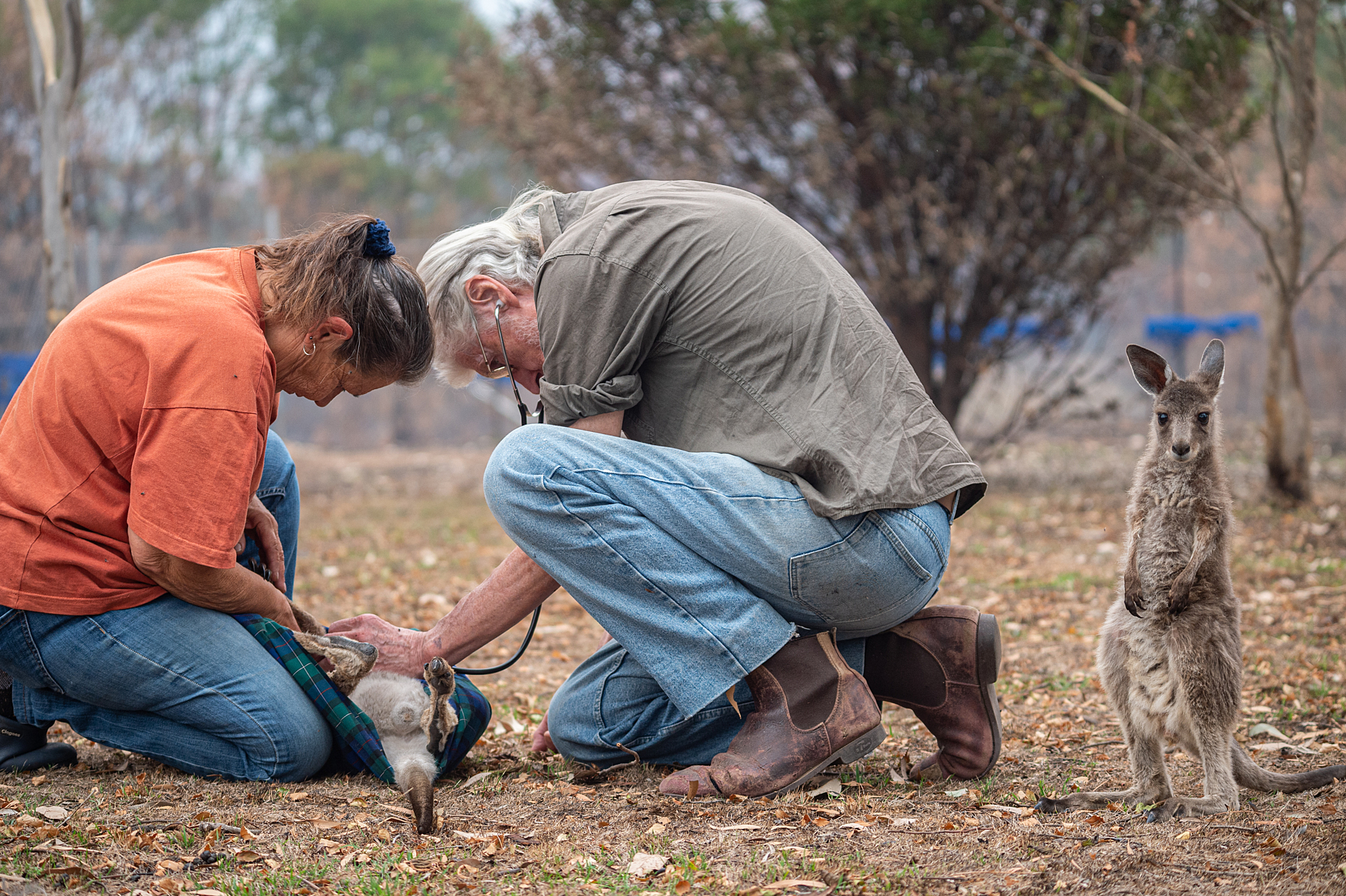
Bushfire victims receive expert treatment from Southern Cross Wildlife Care vets and nurses at a private rehabilitation center in Bega. A joey stands nearby to watch the care, and the camera.
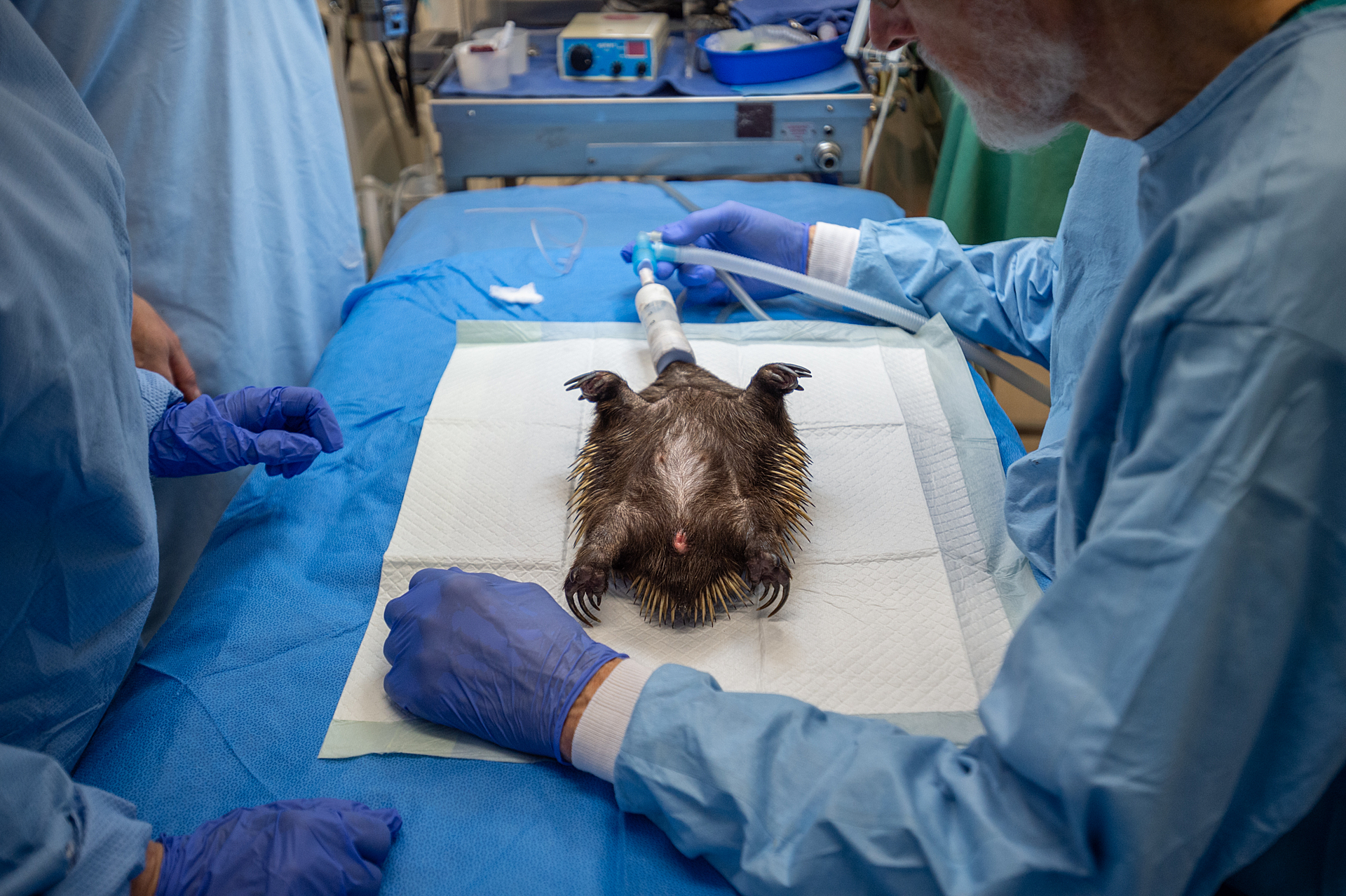
An injured echidna is sedated and treated for injuries at Southern Cross Wildlife Care.
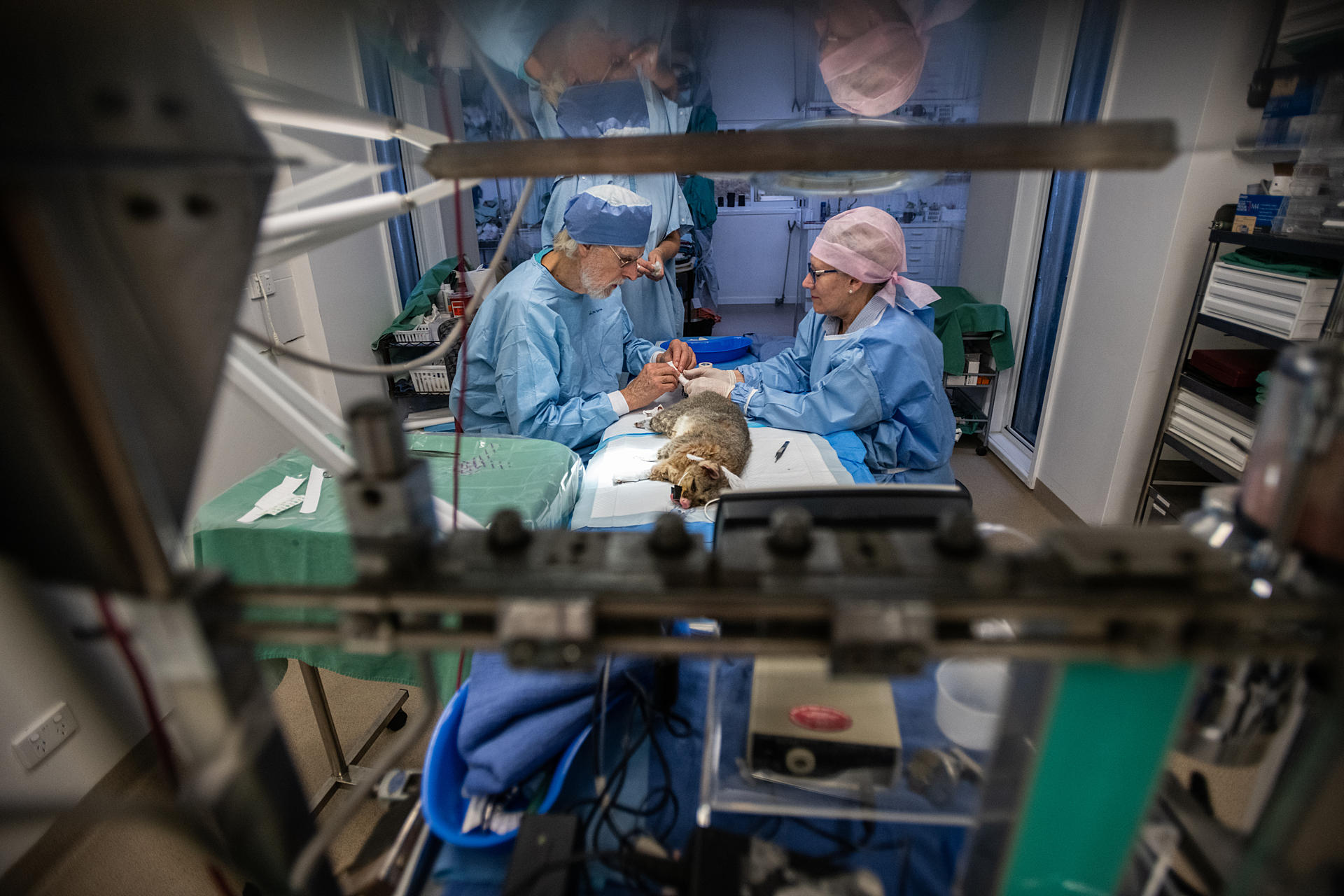
An injured possum receives treatment at Southern Cross Wildlife Care for severe burns caused by the bushfires.
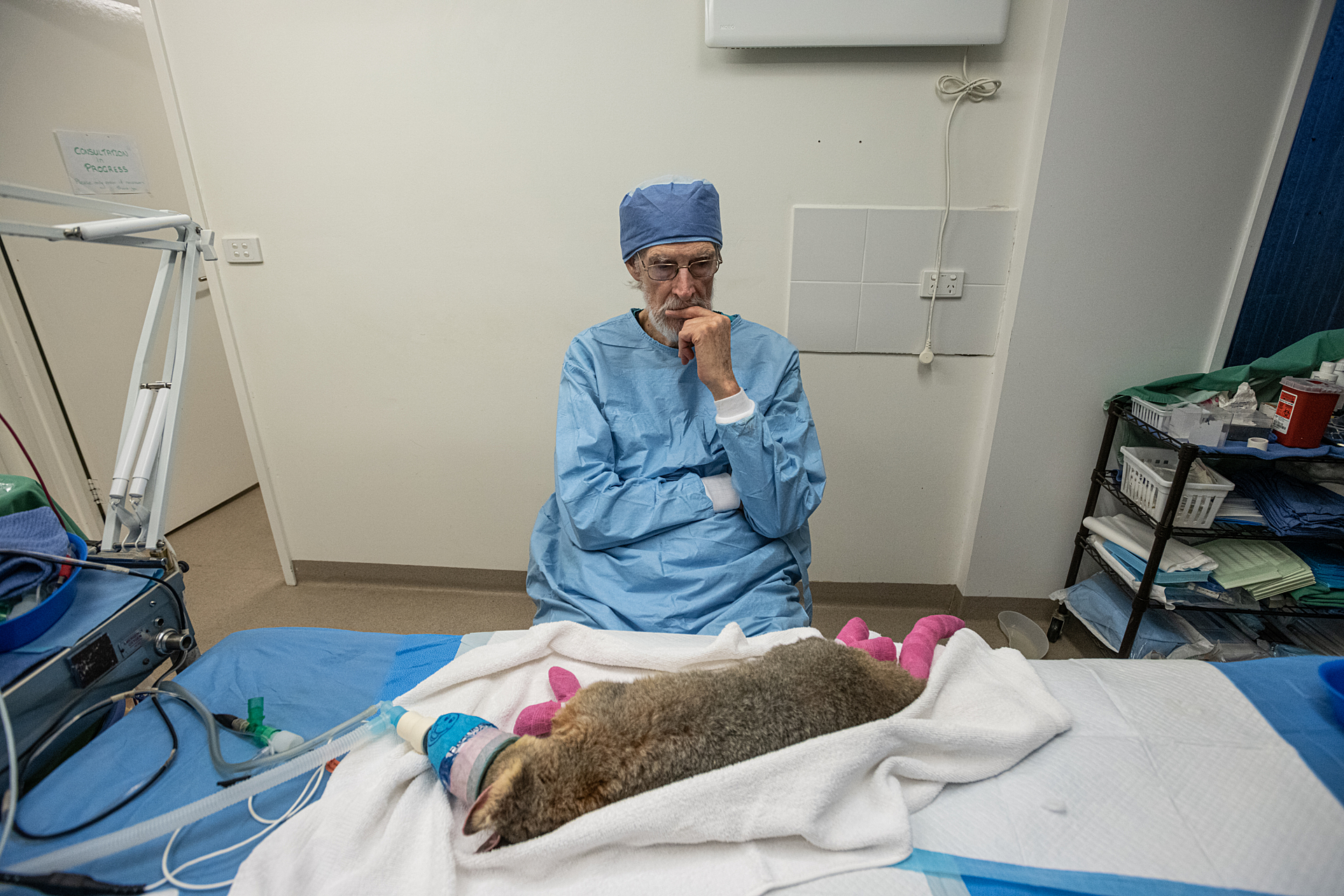
Dr. Howard Ralph of Southern Cross Wildlife Care treats an injured possum under anesthetic. His dressings are changed every 2-3 days. He is recovering well from severe burns to his tail and all four paws.
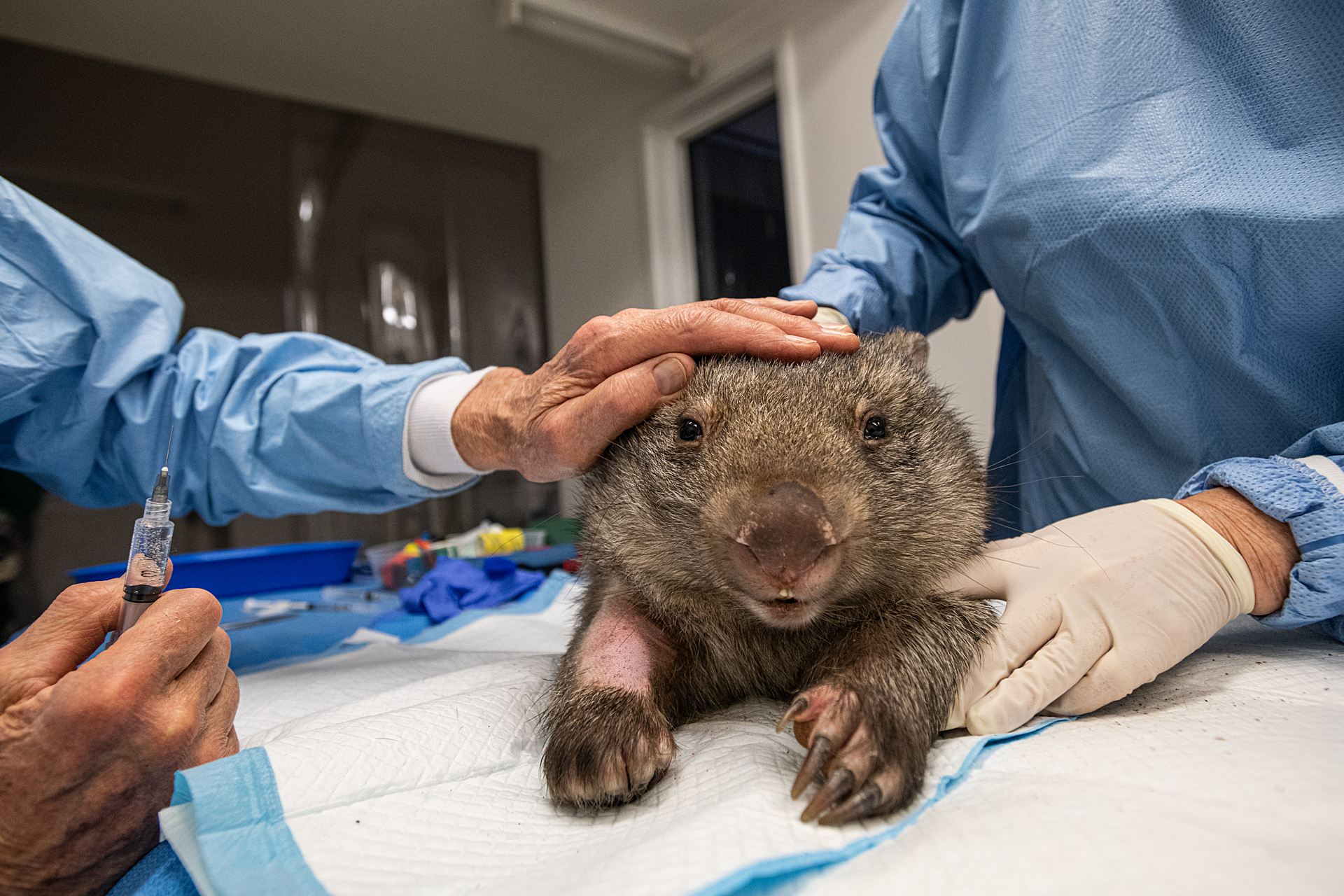
A sub-adult wombat is treated for a brain injury and various wounds at Southern Cross Wildlife Care. He was most likely hurt when fleeing the fires. Braidwood, New South Wales, Australia.
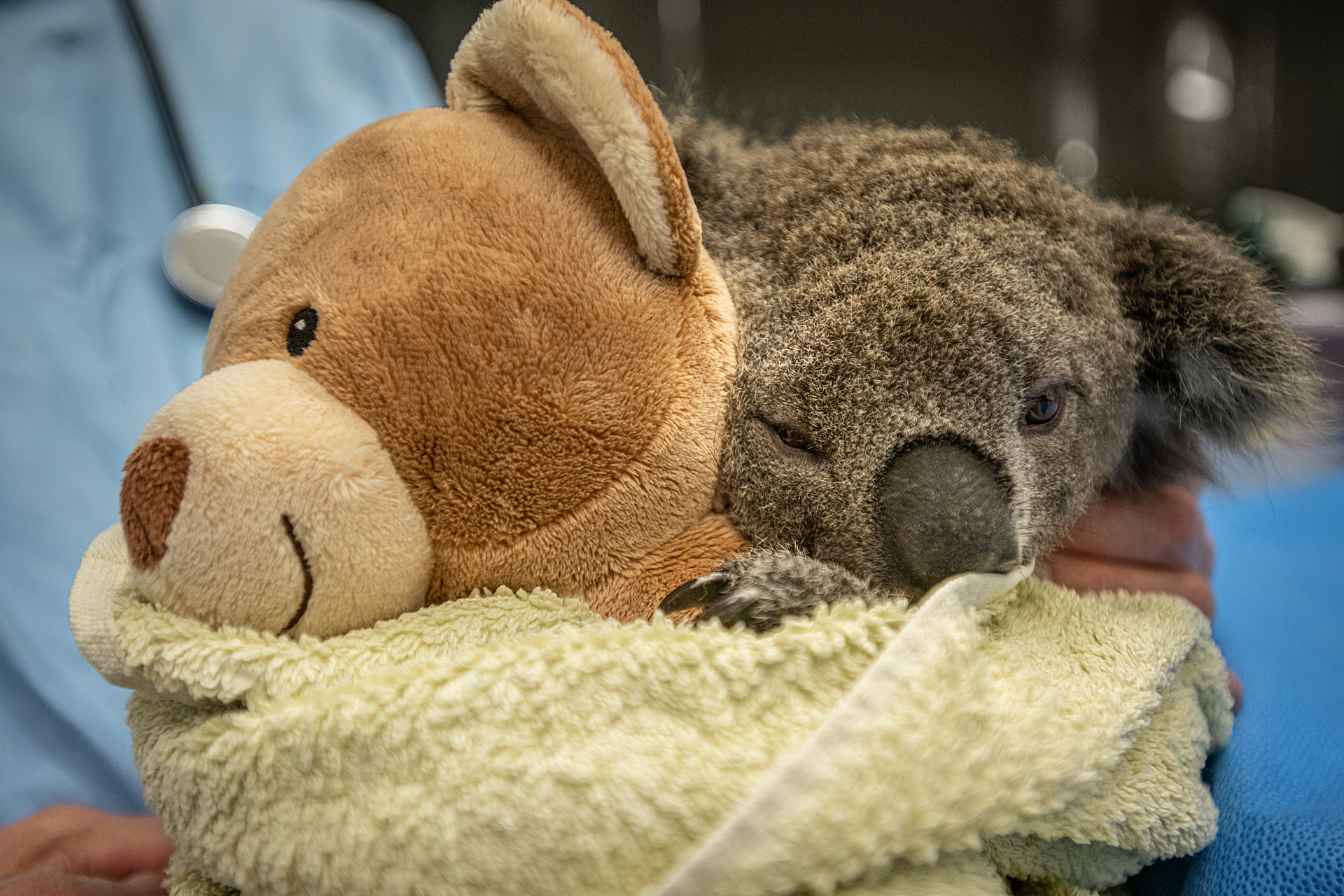
Koalas feel much more secure when they can hold on to something tightly. When koalas need to be examined at Southern Cross Wildlife Care, they give them a teddy bear to cling to. This koala was orphaned in the bushfires and is recovering from wounds. Braidwood, New South Wales, Australia.
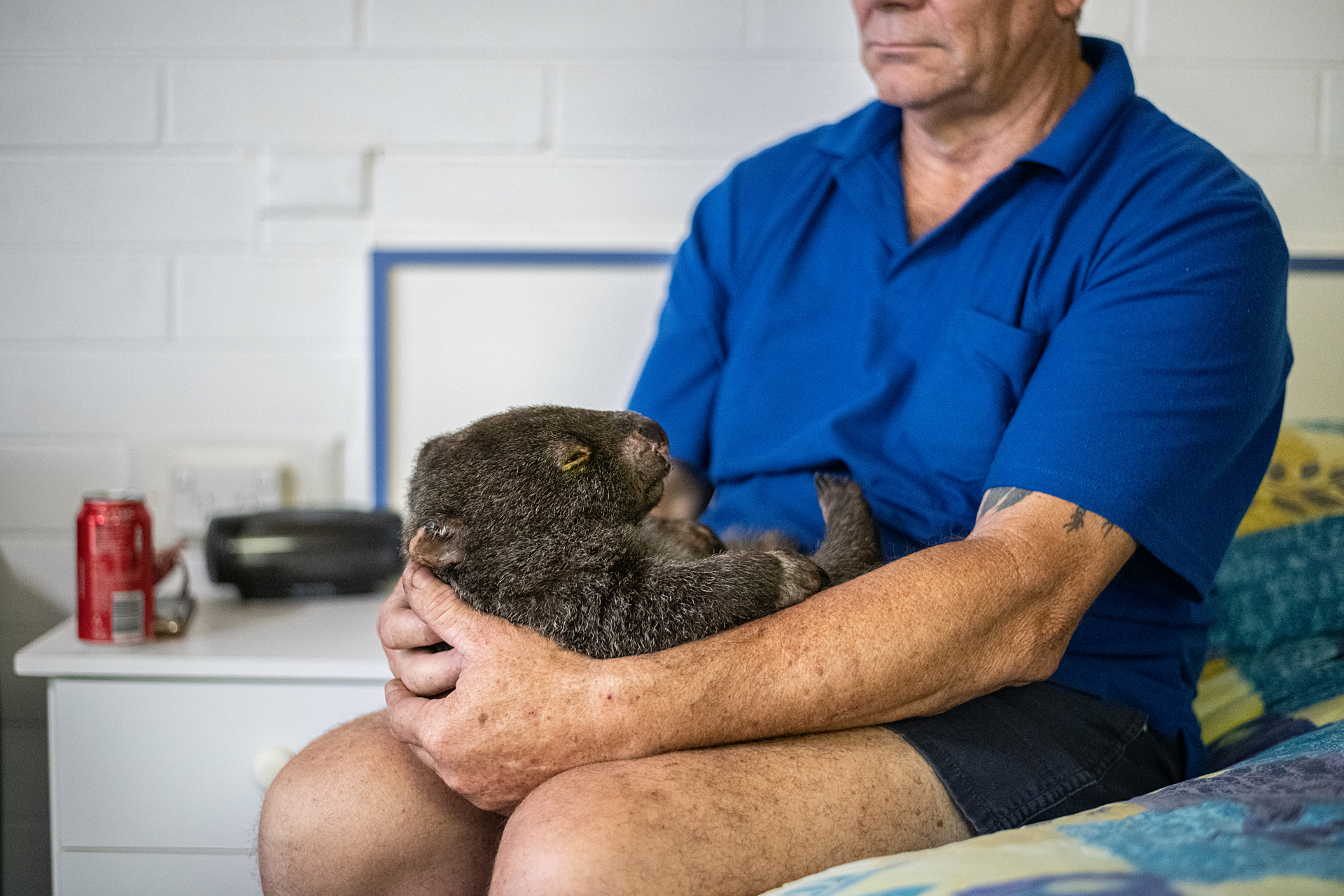
Southern Cross Wildlife Care's triage unit for burn victims sets up in a hotel room in Merimbula, New South Wales. This afternoon, the patients are wombats.
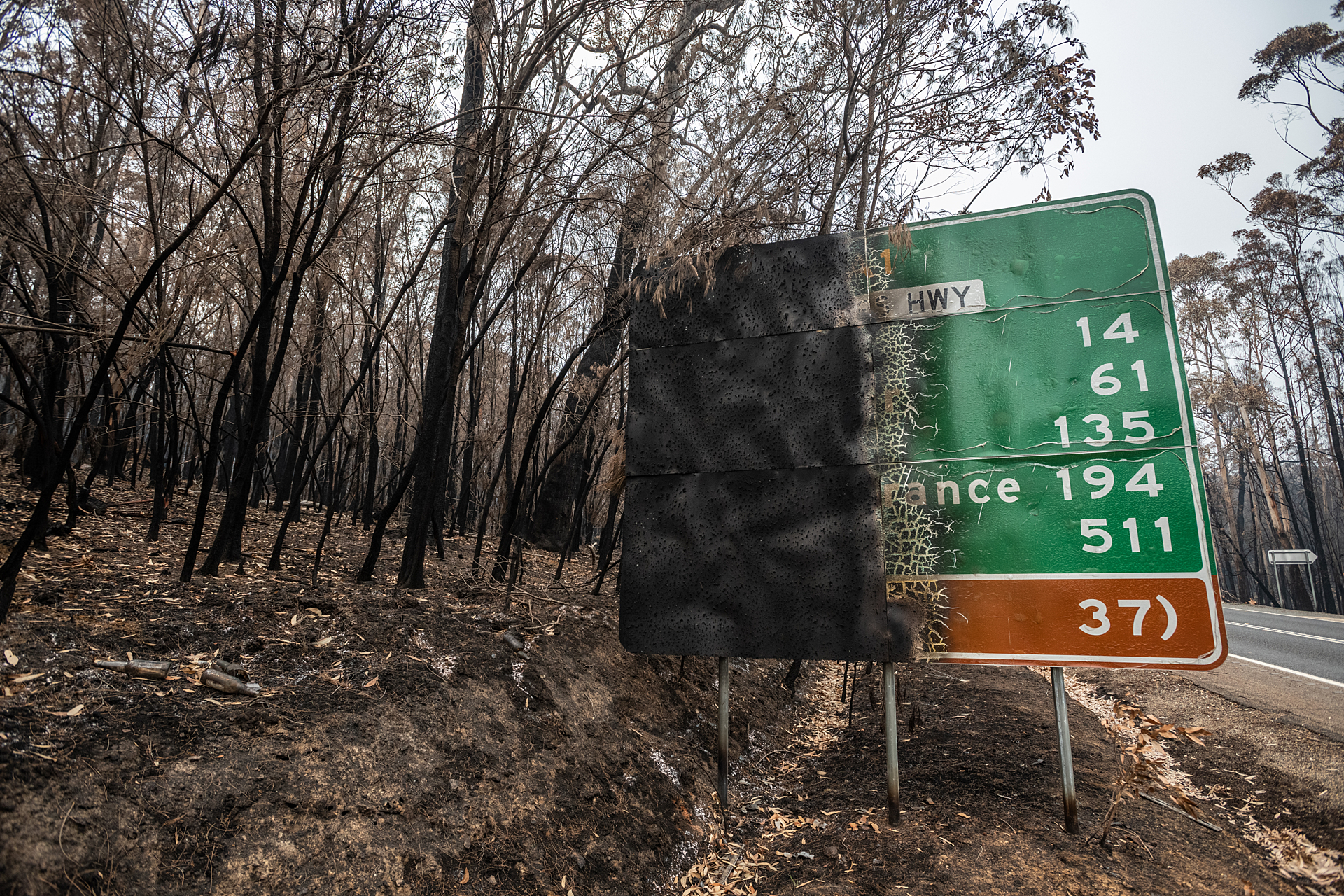
Burned forest and road sign in Mallacoota. This area was devastated by the fires one month ago, leaving much of the native wildlife suffering from traumatic injuries and at risk of starvation due to loss of habitat.
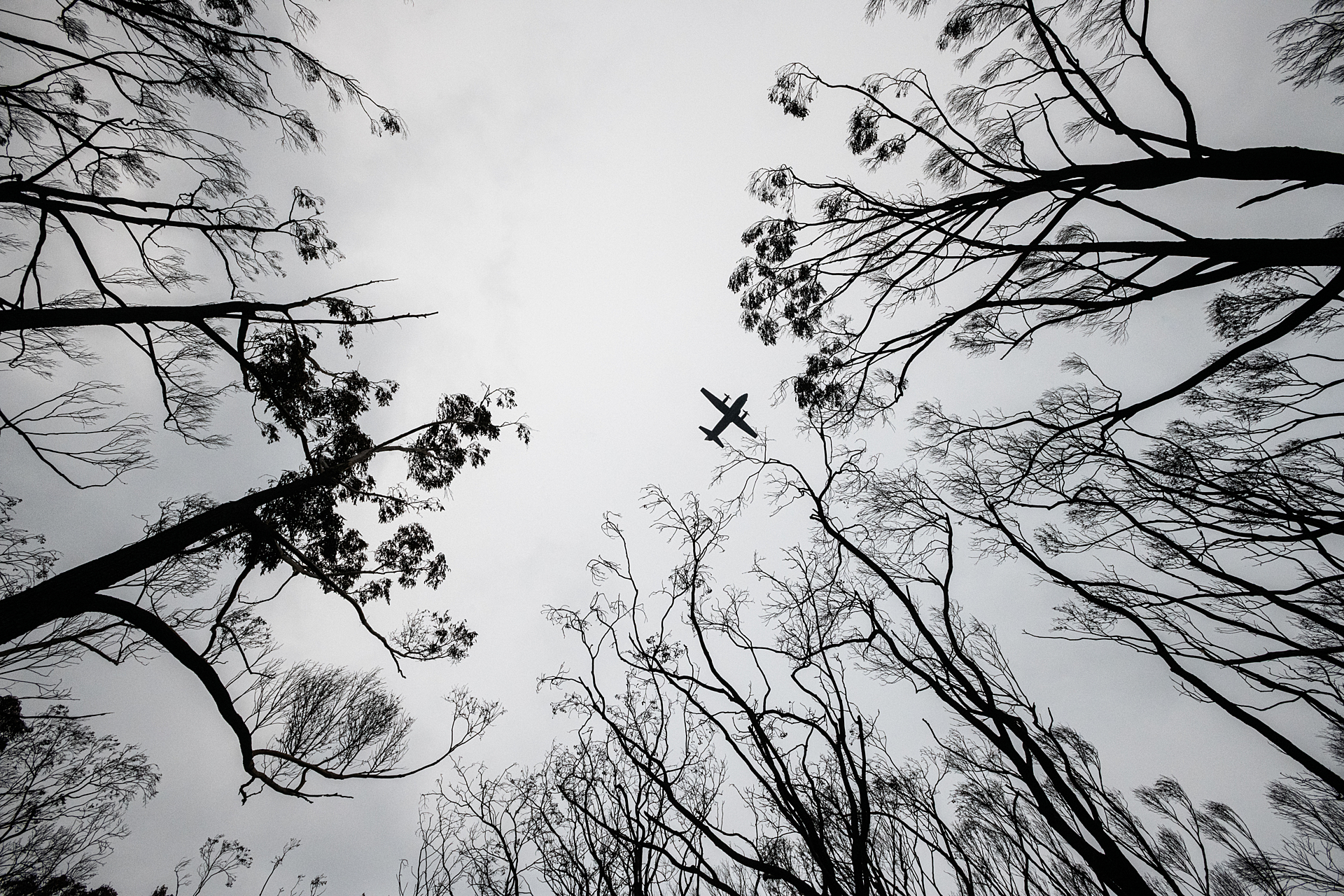
Ten rescued and stabilized koalas are delivered from Mallacoota to Melbourne by A Royal Australian Air Force plane. They will go for rehabilitation at zoos and sanctuaries and then be released into the wild with other koalas.
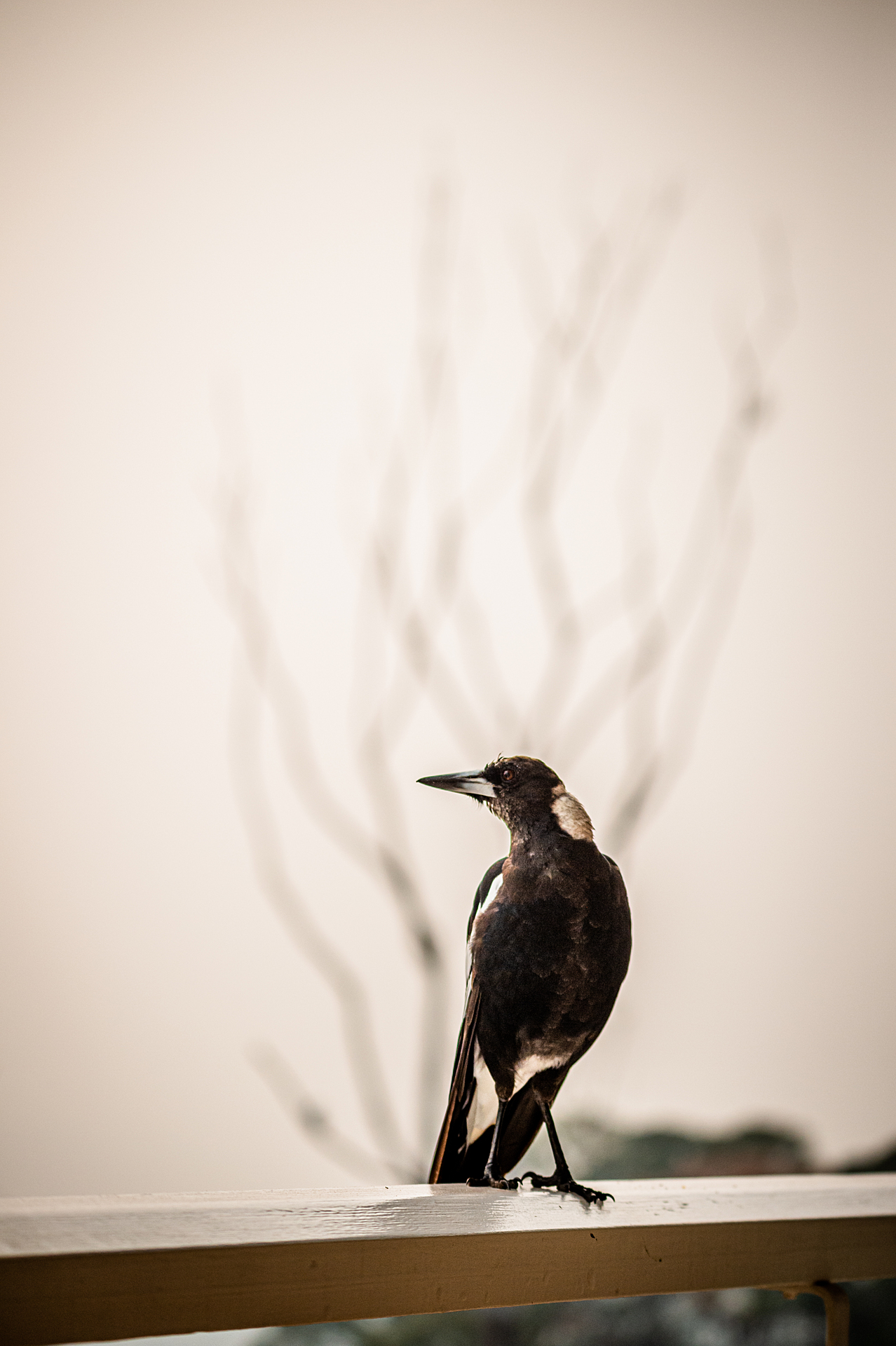
A magpie in a smoky landscape at Mallacoota.
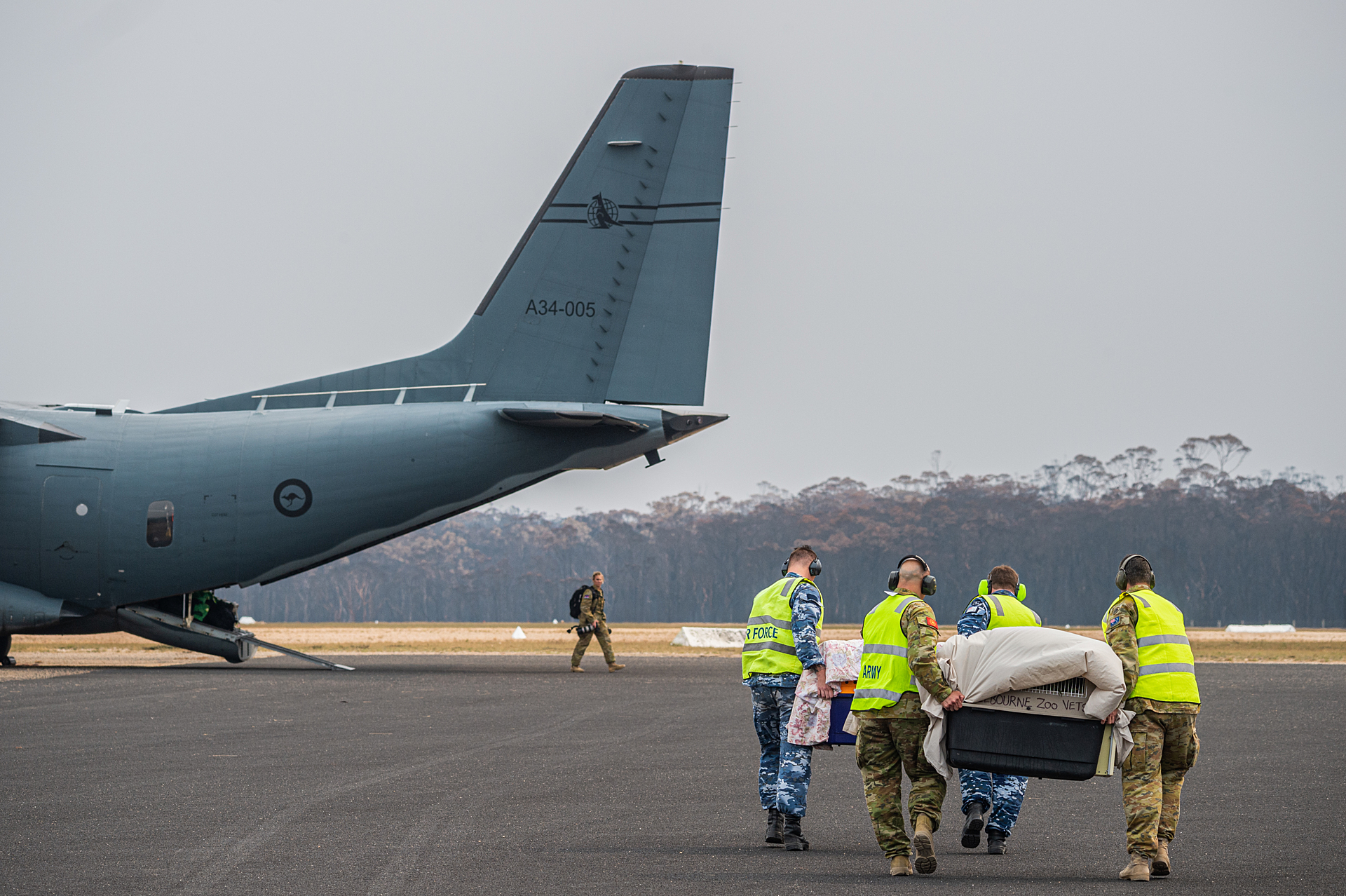
In the small community of Mallacoota, Victoria, the Department of Environment, Land, Water and Planning (DELWP) set up a triage site to take in and care for wildlife injured by the bushfires. Koalas that needed long-term rehabilitation were picked up at the triage center by the Royal Australian Airforce and brought to zoos in Melbourne. On this day, the ten koalas being transferred had been rescued from trees and burn sites by locals and Vets for Compassion.
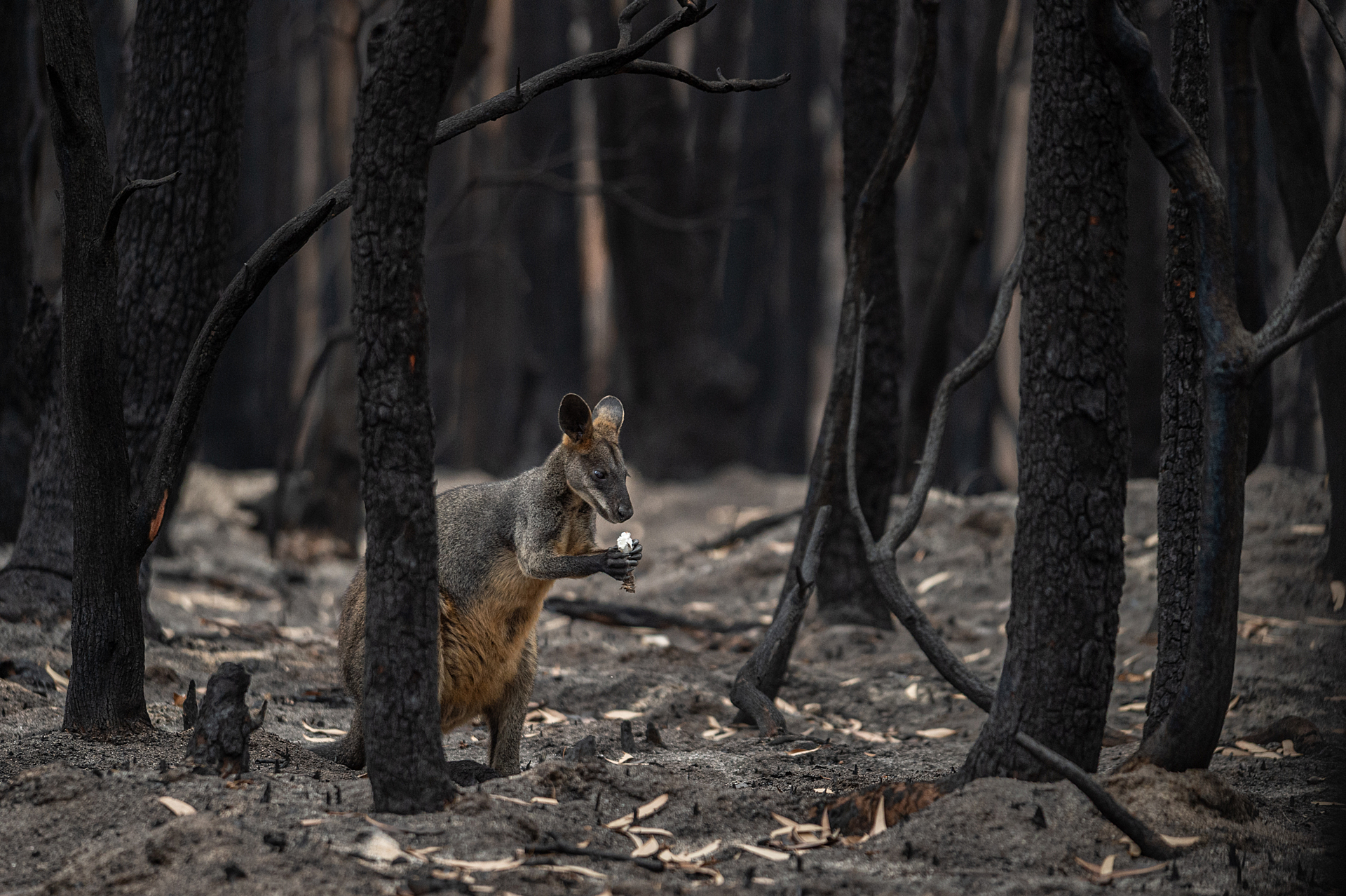
A lone wallaby foraging for food (mushrooms) in a burned forest outside Mallacoota.
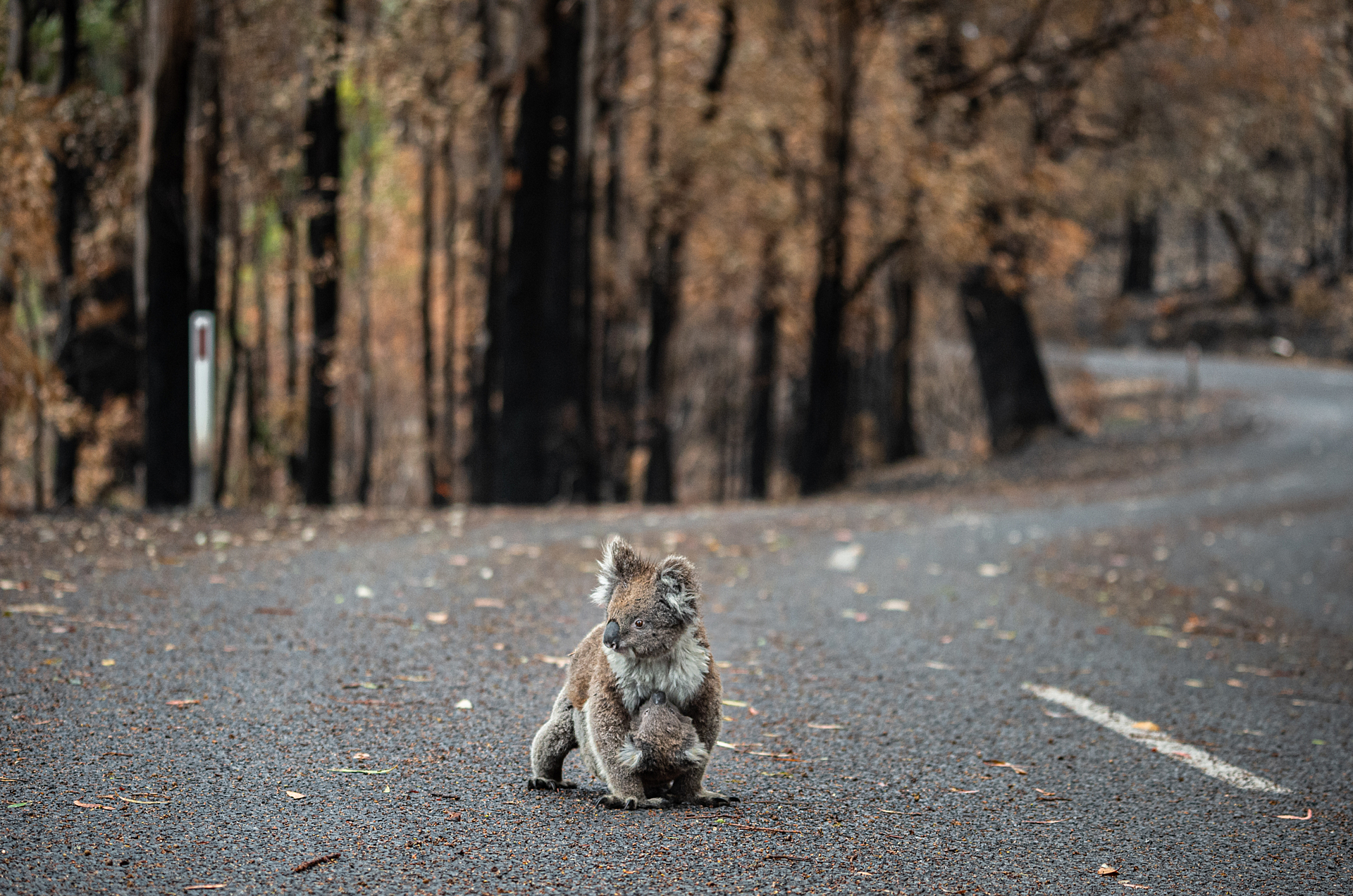
A mother koala and her joey who survived the forest fires in Mallacoota.
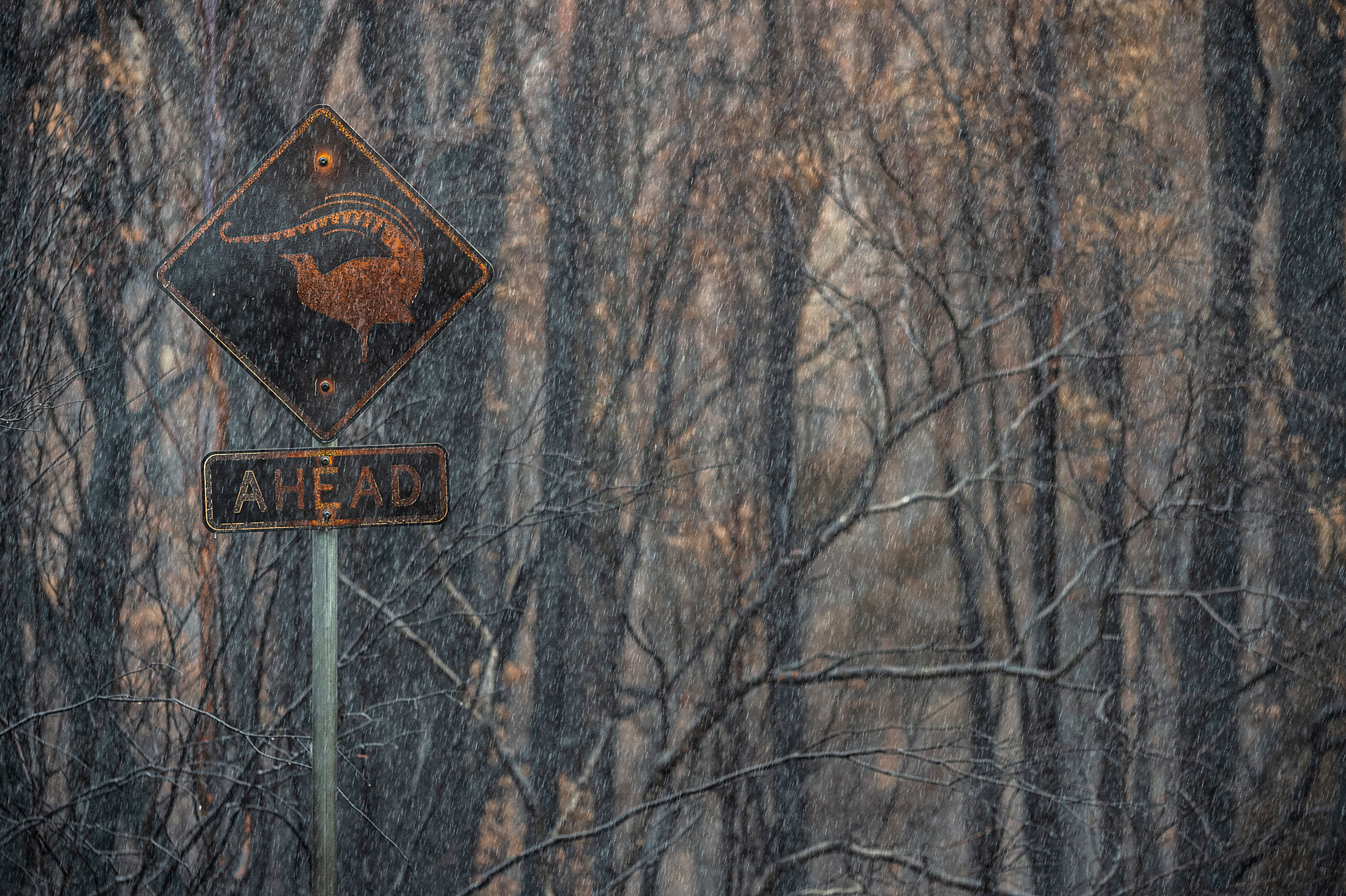
Burned forest and road sign in Mallacoota. This area was devastated by the fires one month ago, leaving much of the native wildlife suffering from traumatic injuries and at risk of starvation due to loss of habitat.
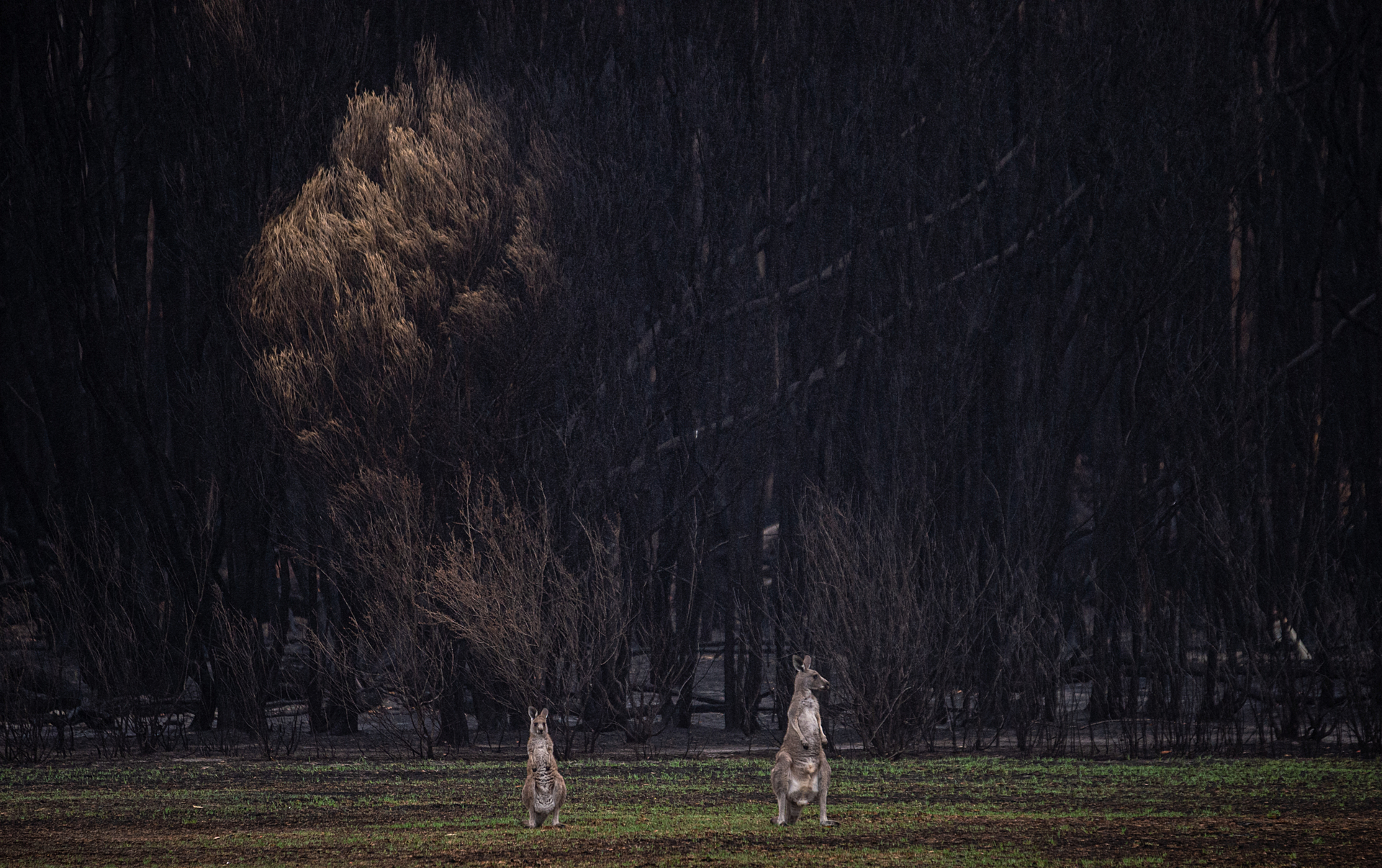
Kangaroos and wallabies who survived the fires congregate on people's lawns to graze on living grasses.
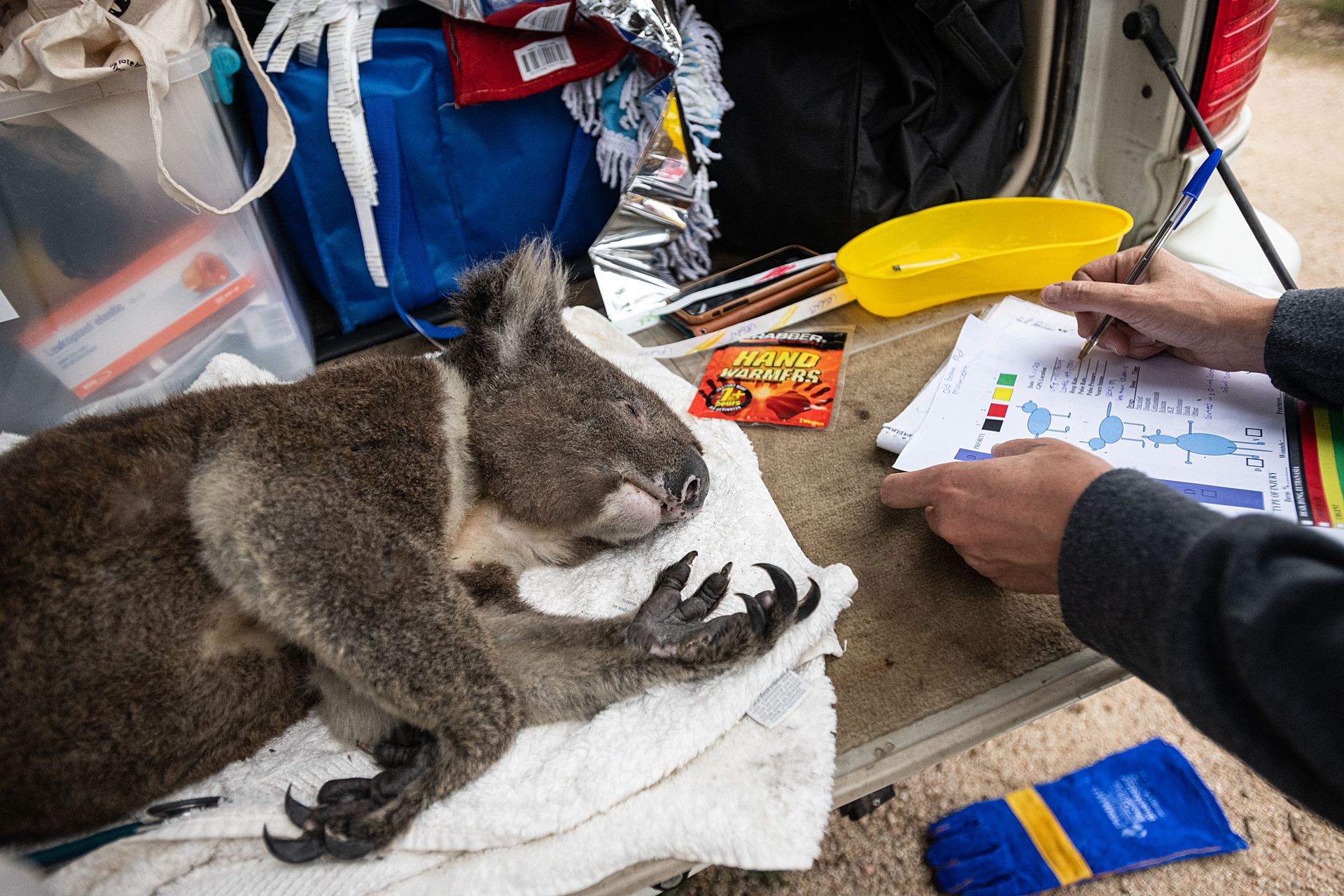
A skinny and dehydrated koala with burned paws, who has been sedated and captured is given immediate veterinary care in the field and sent to triage for recuperation and rehabilitation.
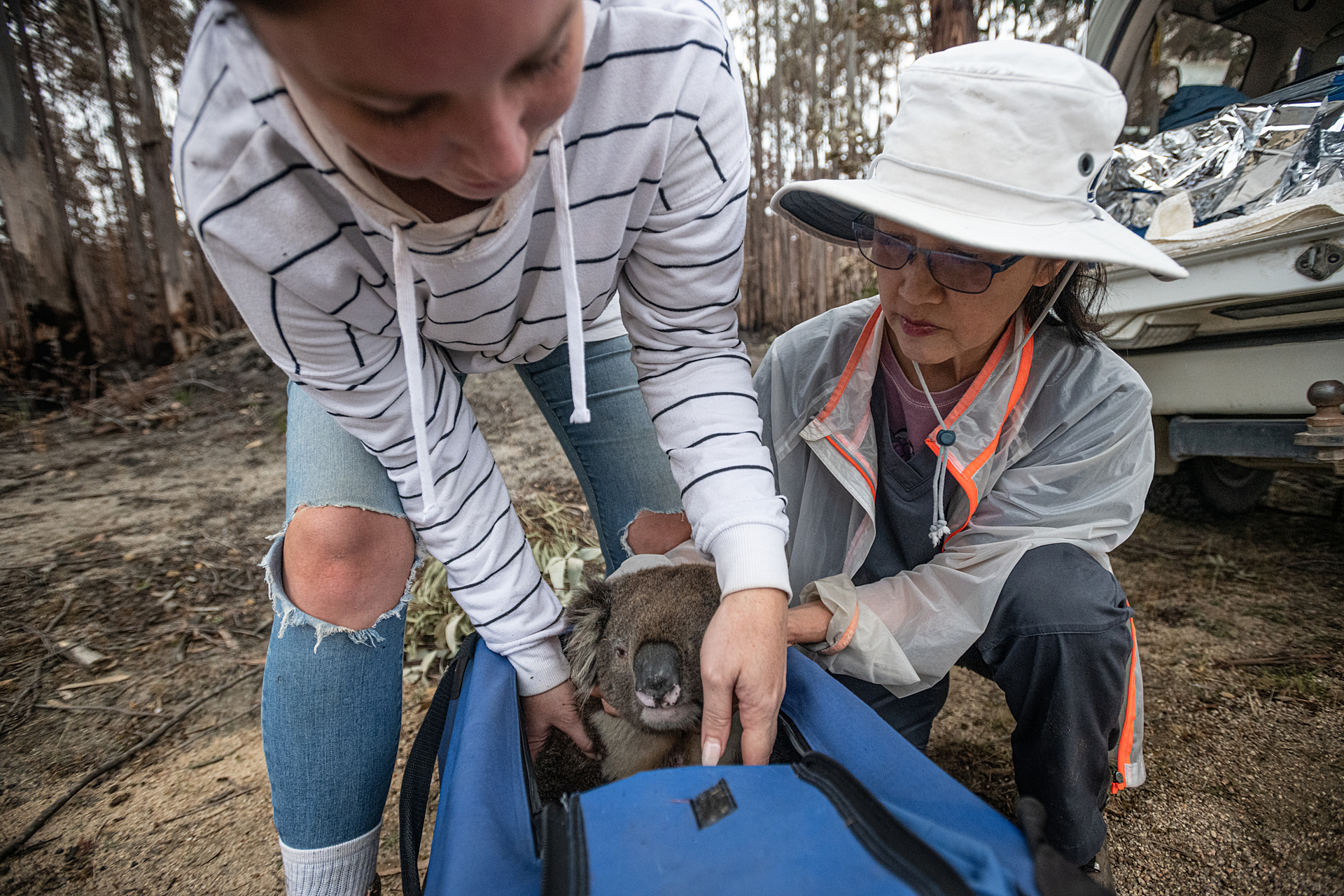
A skinny and dehydrated koala who has been sedated and captured is given immediate veterinary care in the field and sent to triage for recuperation and rehabilitation. The koala also has burns on their paws.
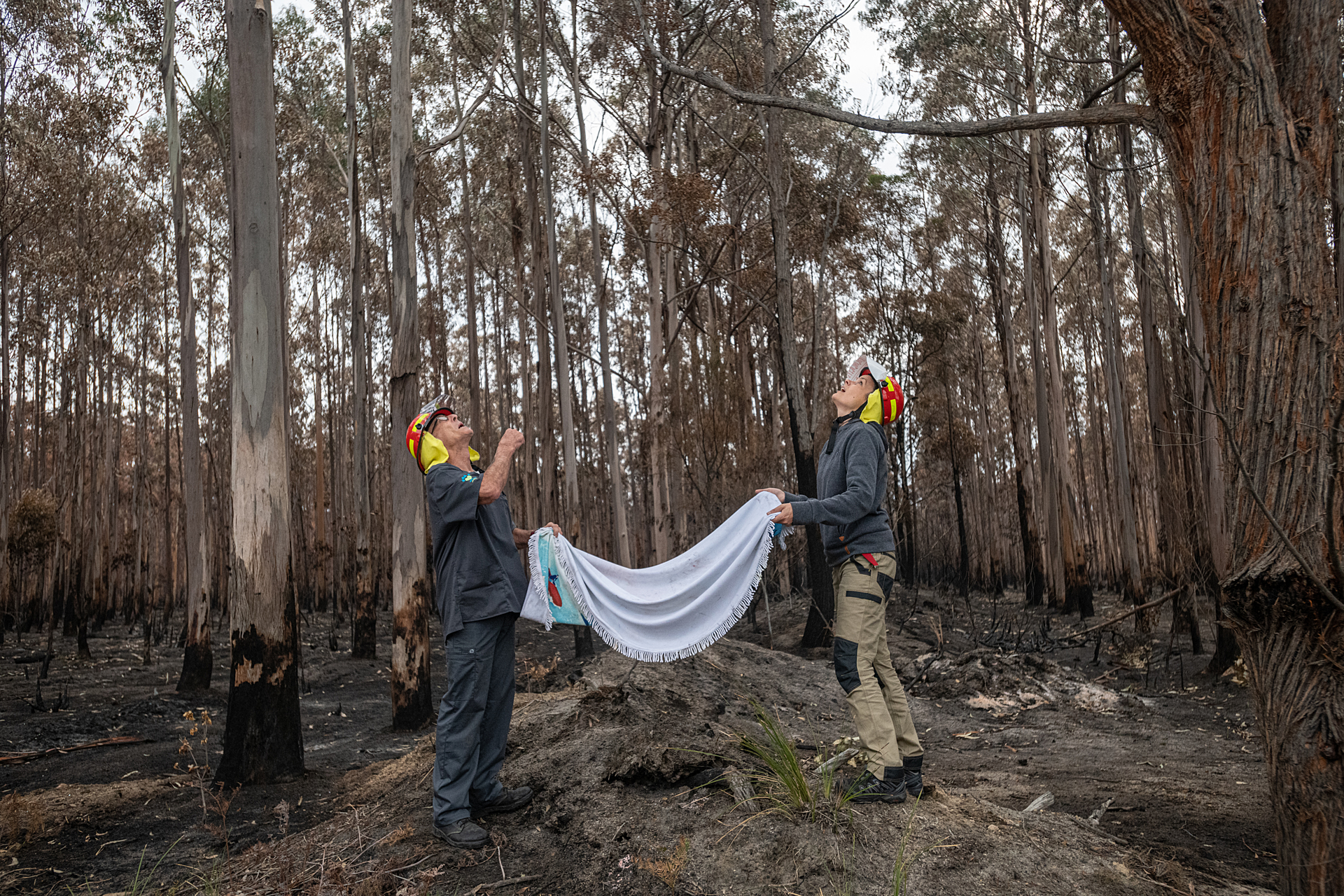
Rescuers hold a blanket under a koala who has been darted and sedated. Though he was safely brought down by an arborist, it's safest to have a back-up below the tree in case the koala falls.
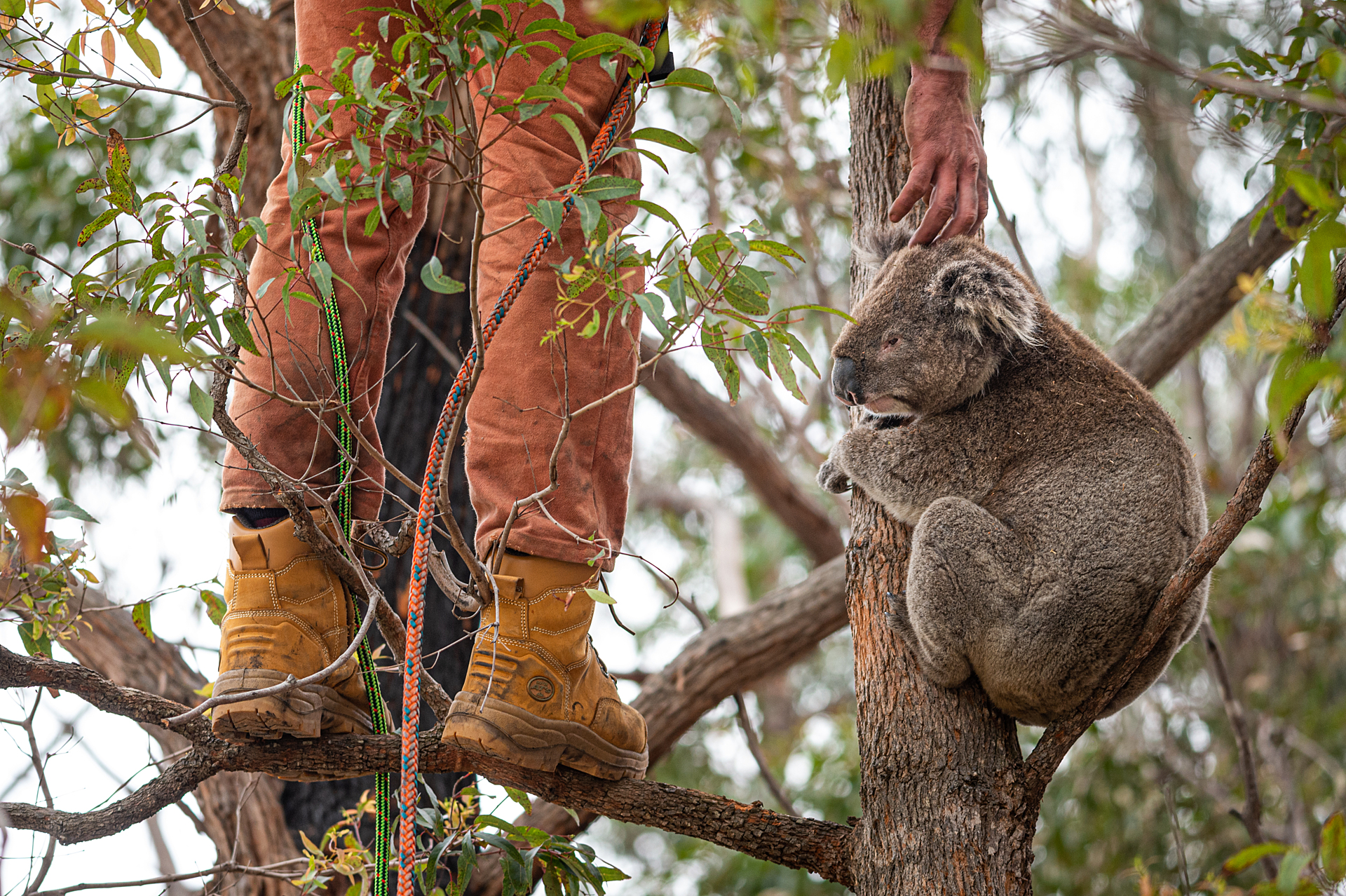
An arborist helping with animal rescues in Mallacoota gauges the sleepiness of a koala who has been darted with a sedation. The arborist helped bring the koala, who suffered from severe burns on his paws, down from the tree.
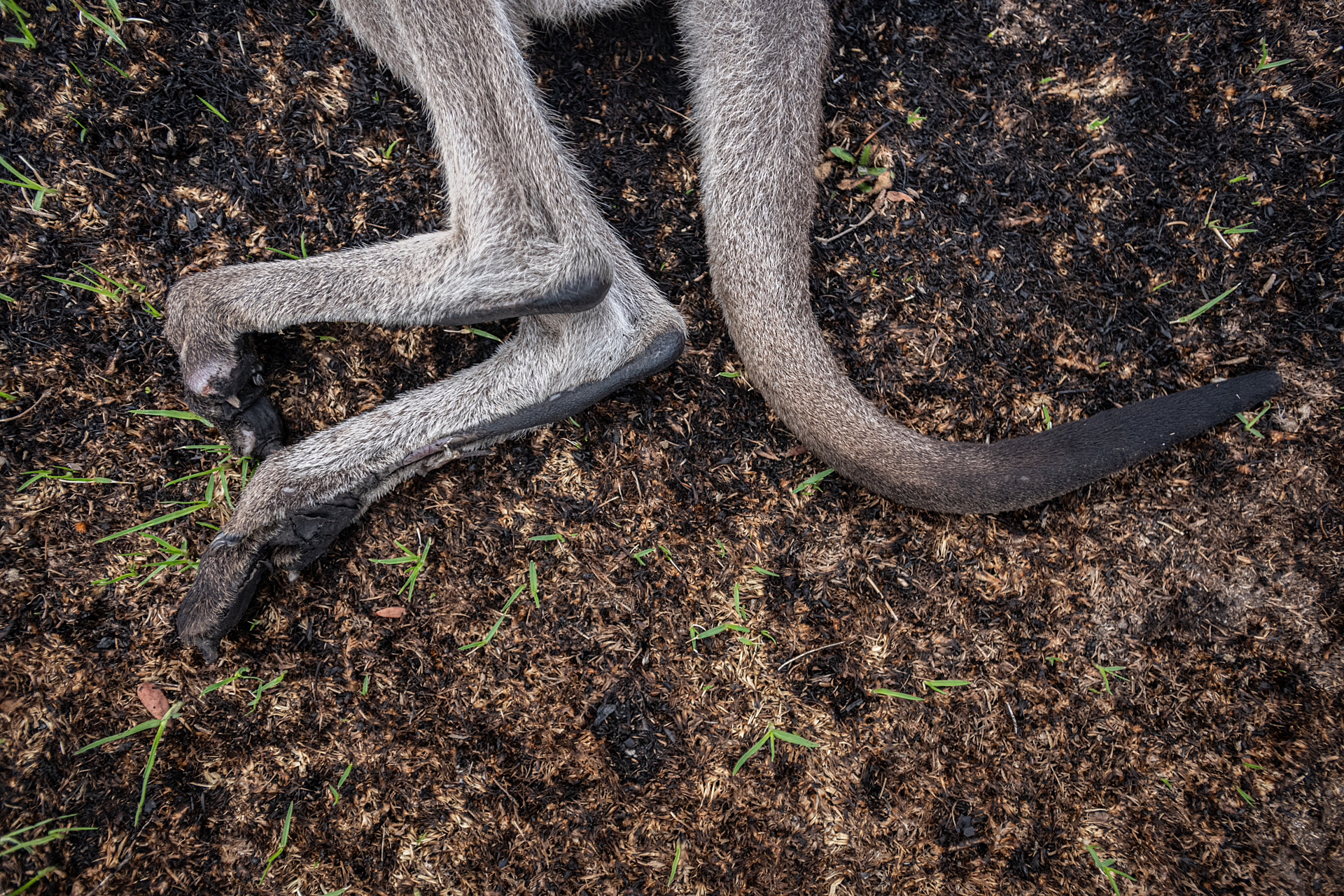
A sedated burn victim (wallaby) in Mallacoota.
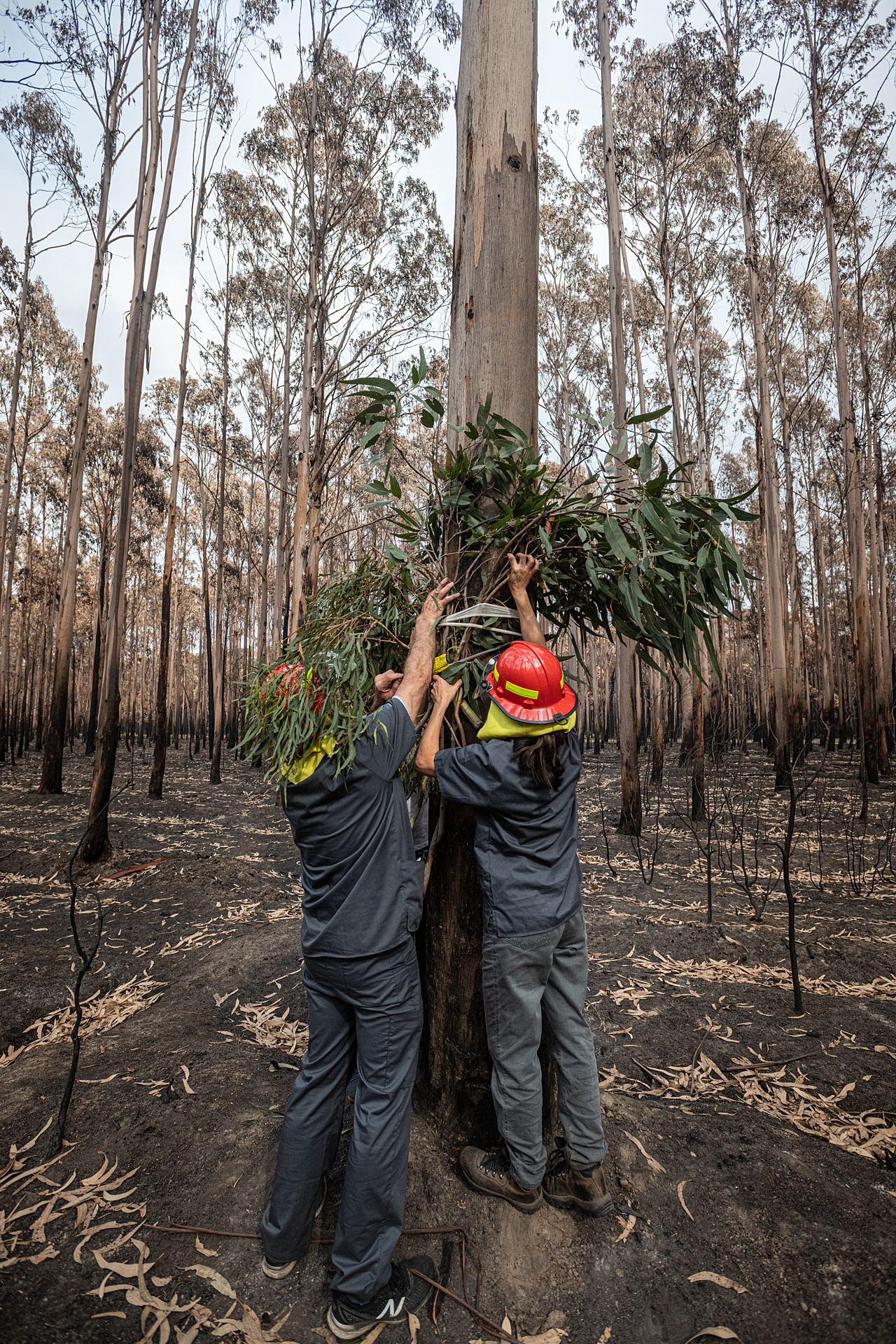
Dr. Elaine Ong and Dr. Chris Barton wrap fresh eucalyptus to a burned tree to entice and feed any remaining living koalas.
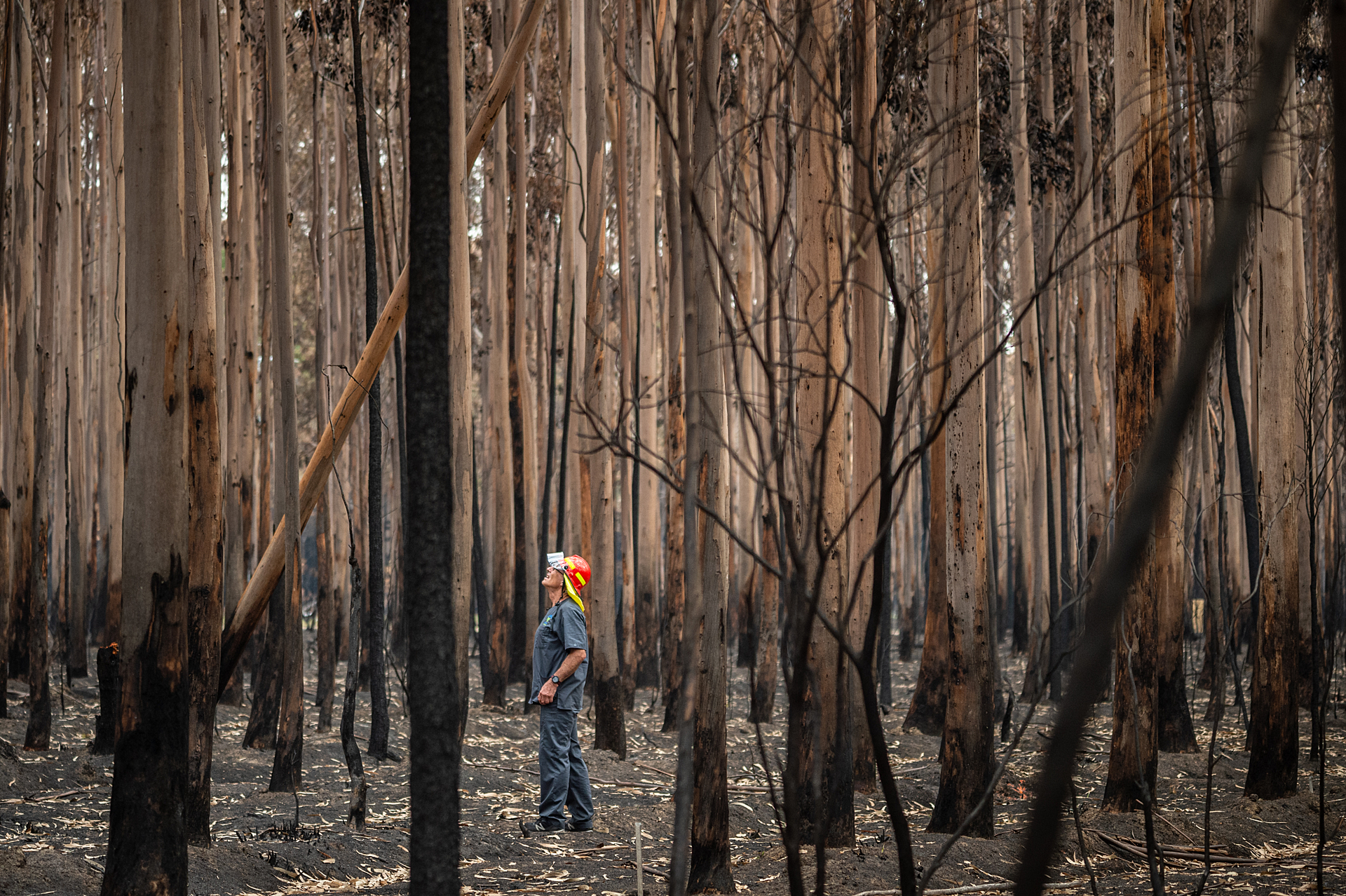
The NGO Vets for Compassion made their way past blockades and red tape to work in Mallacoota, Victoria, which had been severely affected by the bushfires. Founders Dr. Elaine Ong and Dr. Chris Barton (pictured) worked long hours in the burn zones to find and rescue wild animals, with a focus on finding injured, dehydrated and starving koalas who needed immediate care. Animals were found, sedated, and brought to triage. Animals whose injuries were beyond repair were humanely euthanized.
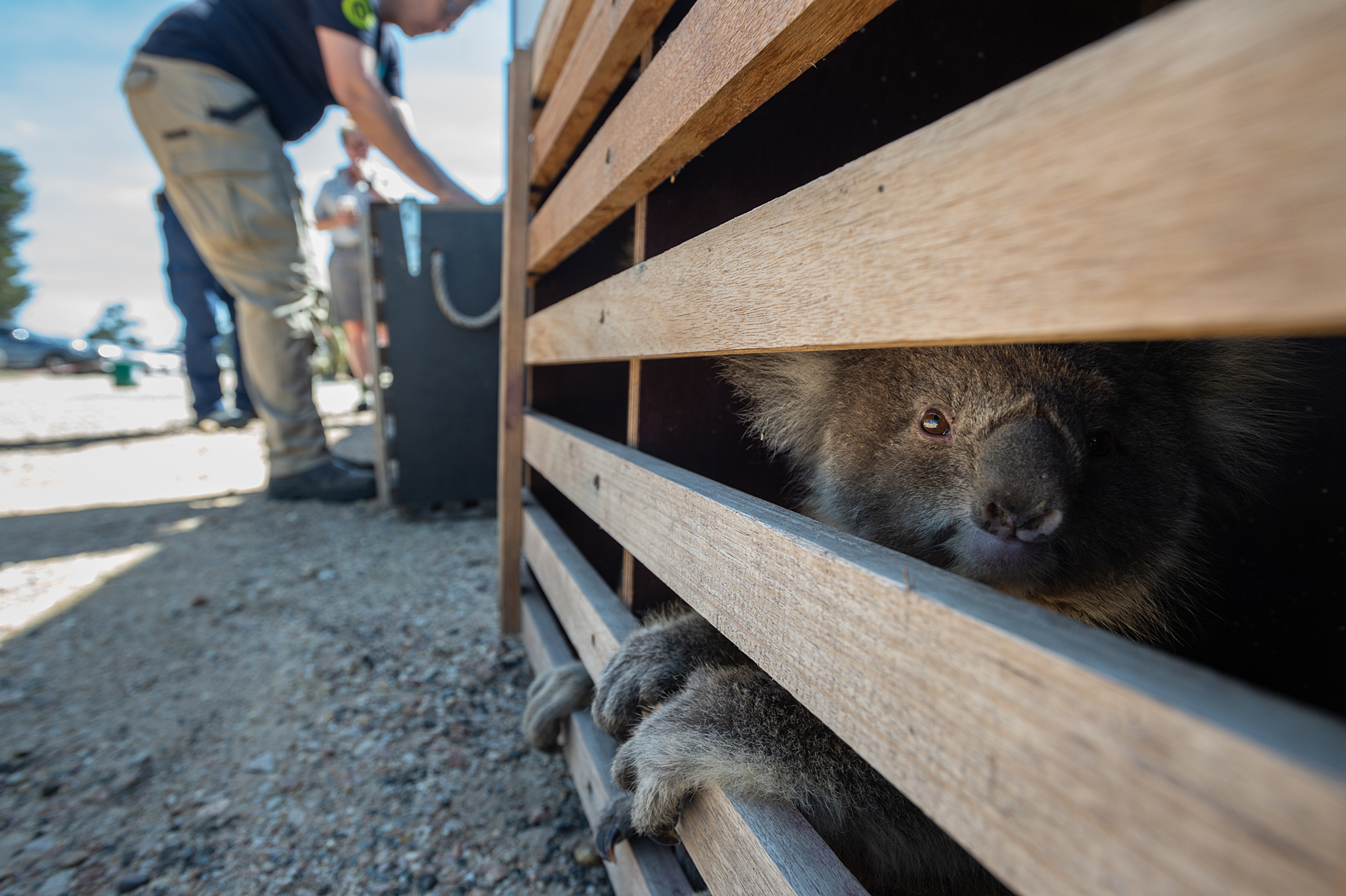
Australia's RSPCA was among several NGOs to set up triage stations in and near burn sites during the fires. The RSPCA set up a mobile veterinary clinic in Bairnsdale where burn victims such as koalas, wombats, and many other small animals were brought for assessment and treatment. From the mobile clinic, animals would be sent for longer term care at zoos, sanctuaries, and wildlife rehabilitation centres.
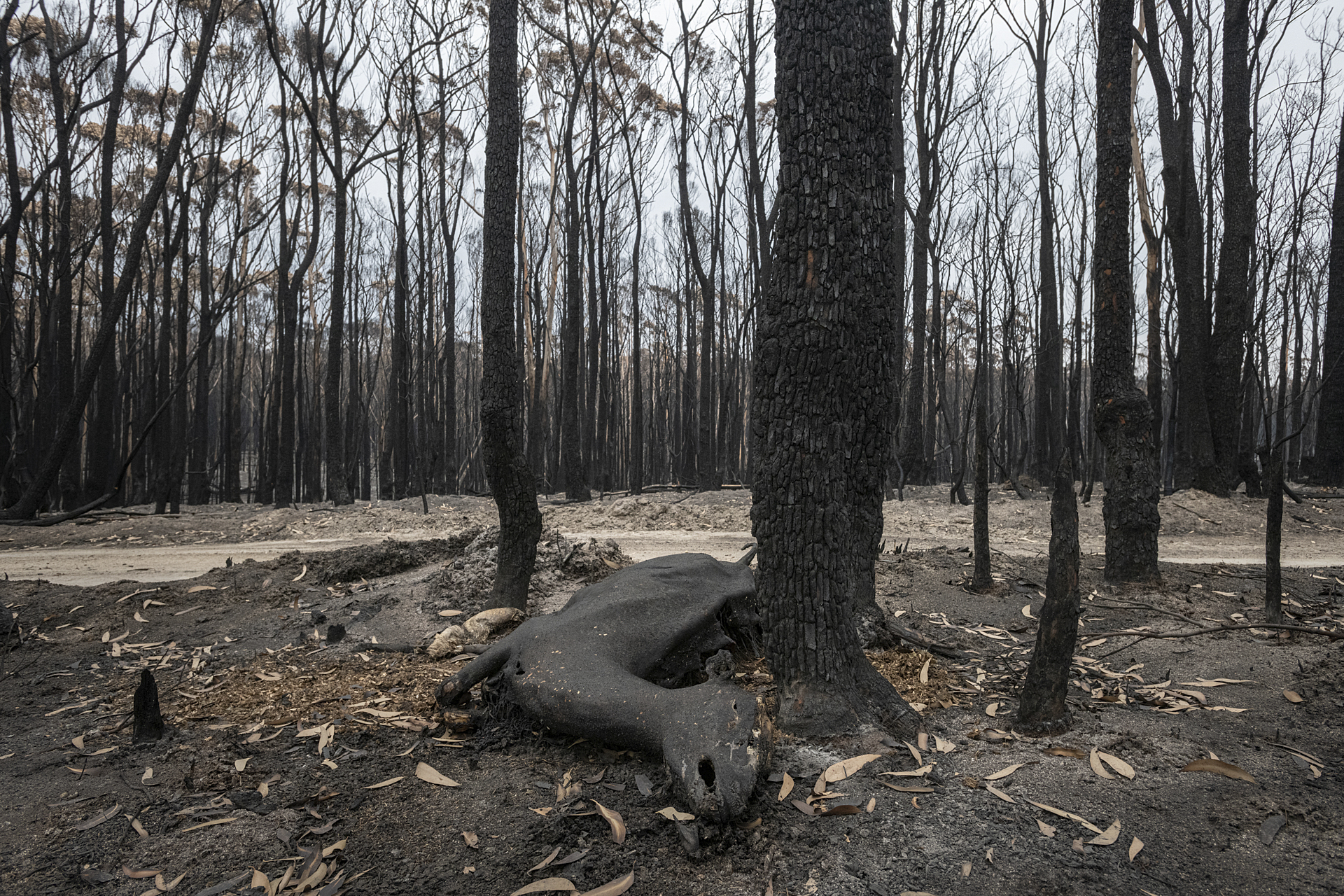
In the small community of Mallacoota, Victoria, the Department of Environment, Land, Water and Planning (DELWP) set up a triage site to take in and care for wildlife injured by the bushfires. Koalas that needed long-term rehabilitation were picked up at the triage center by the Royal Australian Airforce and brought to zoos in Melbourne. On this day, the ten koalas being transferred had been rescued from trees and burn sites by locals and Vets for Compassion.
As the bushfires raged in Australia, We Animals sent its founder Jo-Anne McArthur to document the fires’ effects on both wild and domestic animals. With Animals Australia, Jo-Anne toured thousands of kilometers throughout the states of Victoria and New South Wales. An estimated 3 billion animals were killed or displaced in the fires that season.
